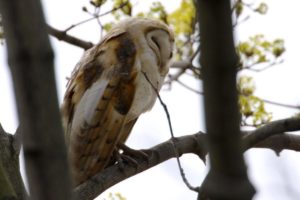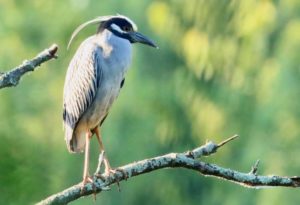Go to All Blogs | Special Offers | Bird Miles Program | Ohio Birding Tours | USA Birding Tours
| All our birding tours
Lake County, Ohio, 2020 Birding Big Year
By Sarah Preston and Jim Smallwood
This blog was first published on 14 May 2020, with 16 additions since, the most recent on 24 February 2021.
Part 1 – Introduction (Parts 2 – 17 now added below this, watch this space for further frequent updates!)
Sarah
It’s mid-May, and my fourteenth year teaching organic chemistry just ended. It was quite the unusual semester since the COVID-19 pandemic forced all college courses to move to an online format. As challenging as these times have been, I now have greater flexibility in my schedule and I’m kept from leaving Lake County for work or travel, which has allowed me to chase and find all kinds of birds near home. It also cemented an idea I’ve had in my head since a spectacular day of birding in January, but more about that day later. The idea of course was to do a Lake County Big Year. I finally have some time to reflect on how it’s gone and hopefully get this blog caught up to the present.
I have appreciated nature and the outdoors for as long as I can remember. My family often went hiking and camping when I was growing up. We had a bird feeder and a circa-1980 copy of Peterson’s Field Guide to Birds. The first time I remember listing and counting is when I was eight and we drove from Cincinnati, Ohio, to Key West, Florida. I tallied all the herons, egrets, ospreys, eagles, and hawks, not always specific species because at that time all white wading birds were simply egrets and a hawk was just a hawk.
Fast forward 30 years to 2014, when I took an ornithology course at the small college where I teach, which is when I became a birder. I borrowed a tiny pair of 8×25 binoculars, which I learned how to use in class by focusing on clumps of leaves or whatever our instructor would tell us to turn around and see how fast we could find. We also learned about eBird, but our professor cautioned us, “It’s not a competition.” And I thought to myself, “Oh, but it is!” This was years before I knew anything about the eBird Top 100 lists. I took those binoculars to Magee Marsh at the end of the semester and used them to see the first warbler I can remember, a female Golden-winged Warbler, which had attracted quite a crowd. This bird I’d never heard of was a big deal! I became hooked on this birding thing that offers intellectual challenge, exciting chases, and views of beautiful and intriguing beings.
I officially met Jim in January 2019 at the dawn gathering to see Ohio’s first Slaty-backed Gull. Shortly after the gull was identified that morning practically the entire flock lifted and took off for the dump. I was dismayed because the look I’d gotten was quite unsatisfactory. What were these strings of pearls everyone was claiming to have seen? Half the time my 17x magnification scope had frost on the lens, so I couldn’t see anything at all. I stayed behind wishfully thinking that the Slaty-backed Gull had also. Jim was there too, and the two of us scrutinized this dark-mantled gull’s legs until we received the disappointing news that the gull had been identified at the dump. Over the past year Jim and I have seen each other at additional rare bird sightings and worked together volunteering for Cleveland Lights Out. Recently Jim mentioned writing about this year’s unique birding situation, so I invited him to write this blog with me.
Jim
As I sit here trying to introduce myself, the other Lake County Big Year birders are out there chasing everything that moves. This does hamper concentration a bit as my Messenger app keeps dinging, indicating a possible new or rare bird. I don’t want to miss a good bird as completion is stiff. The other reason I’m sitting here at home is that my Zeiss binoculars have been hung-up for months at the repair factory in Germany due to the pandemic. I don’t want to go another day without them, and they require a signature and ID and are arriving sometime today. So there is no better time to write than now.
I have lived in Lake County, Ohio, for 31 years. I came here in 1989 when I took a park ranger position with Lake Metroparks. I semi-retired in 2016 and now spend almost all of my spare time chasing birds all over the state. This culminated into an Ohio Big Year in 2019, where I fell two birds shy of the magic 300. This year was supposed to be another Ohio Big Year, and I was well planned out and had picked up 20 difficult species outside of Lake County in preparation for toppling that 300 mark. Then the pandemic hits, and travel is discouraged with stay-at-home orders from the Governor.
I didn’t just start birding when I retired. It all started before my 37 years in park law enforcement. I went to Hocking College for Natural Resources in Nelsonville, Ohio, from 1979 to 1981. My last quarter before graduation required me to take a field ornithology class. This was truly one of the toughest courses I’ve ever taken, and it dealt solely with identifying birds in the field by sight and sound, and I knew very little about birds. I barely passed that class, but I never forgot my instructor’s amazing abilities to identify a bird on a chip note or at great distance with just a quick glance; it was magic to me. I was so intrigued that I started attending the Clark County Audubon Society bird walks after leaving college and became good friends with hike leader Doug Overacker circa 1982.
That’s the path that I took to get to this epic Lake County Big Year and becoming a Real Lake County Birder. I may also go for that magic 300, but the county competition comes first. There may never be another chance for a Lake County Big Year with all the great locals birding together. This has never happened before, and, like I’ve said, I’ve lived here 31 years.
My Instagram birding pics can be found at @jsskyline17.
Lake County, OH
Lake County, where we both reside, is in northeast Ohio and is the smallest county in the state. Lake Erie makes up its entire northern border. We boast a number of rarities, the most recent one being Ohio’s first Tropical Kingbird found by Lake County birding legend, Ray Hannikman. According to eBird our little county is the #3 county in Ohio for all time number of bird species with 337 on record. Below is a table of notable Lake County hotspots and relative distances and driving times from our respective houses.
| Hotspot | Distance from Sarah’s house | Driving time from Sarah’s house | Distance from Jim’s house | Driving time from Jim’s house |
| Mentor Headlands | 7 miles | 12 minutes | 15 miles | 27 minutes |
| Mentor Lagoons | 4 miles | 10 minutes | 12 miles | 19 minutes |
| Chagrin River Park | 5 miles | 8 minutes | 5 miles | 8 minutes |
| Wake Robin | 7 miles | 12 minutes | 15 miles | 19 minutes |
According to Lake County birder lore and available eBird records the record for most species seen in our county in a single year is 250 species set by Dave Chase in 2017. Some people believe that a much higher number is possible, and there are folks who don’t keep their records in eBird and have had nearly that many species in a year in the Headlands area alone. Whatever the actual record, 250 is a nice round number to have as a goal, similar to Ohio’s 300 club.
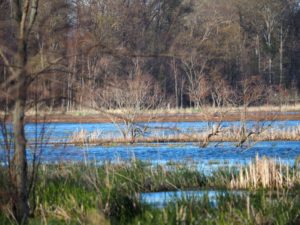
Part 2 – January 20, 2020
Jim
I learned a lot from analyzing my Ohio Big Year attempt. My main goal for this January was to knock off some of those tough-to-get birds I chased all year as well as shooting for the “Ohio January 100”. I also looked at my record-keeping system, which consisted of a paper checklist with the difficulty rating of seeing each species. This became a nightmare when the list got temporarily misplaced. That archaic system had to change, and with the start of 2020 I began eBirding every sighting. I never realized just how powerful a tool eBird could be until I started using it full-time.
By January 20th I had 10 difficult state species behind me, including a lifer Harris’s Sparrow. I met with my birding buddy Jamie that morning, and our goal was to look for Horned Lark, Snow Bunting, Lapland Longspur, and possibly the super-hard-to-find Purple Sandpiper here in Lake County. We checked Fairport Nursery Road and Fairport Harbor Lakefront Park and finally ended up at Headland Dunes State Nature Preserve.
I told Jamie I wanted to check the beach and breakwall for Purple Sandpipers. Jamie humored my request, and off we went to the beach. Let’s be honest, how often have you ever found a Purple Sandpiper on the beach? My answer to myself is “never”. As we get close to the beach near the lighthouse I see a shorebird and tell Jamie it’s a Purple Sandpiper. He sees the bird and looks at me and says, “Do you think it is a Purple?” I shrug, but the bird is too far away to identify. I had a Dunlin in Cleveland the week prior, so the odds are it’s a Dunlin, but I can’t see the bird well enough, so I say nothing. As we get closer I’m dumbfounded to find out that it is indeed a Purple Sandpiper, and on the beach at that! This bird is also a Lake County lifer for me.
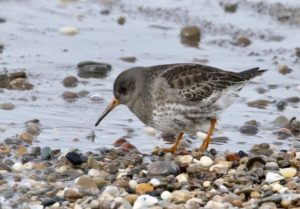
I take dozens of pictures of this bird, which literally walks within ten feet of us going about his business of dining on whatever washes up. I put the sighting out on Messenger to our Lake County group as well as post it on Ohio Chase Birds. Andy, from our Lake County group, texts back, asking if it’s really on the beach and I respond by saying, “of course.”
In the meantime Jamie is getting pictures from Sarah of a Great Horned Owl being seen at Chagrin River Park. Jamie can’t figure why she is sending him pictures of this owl, and I’m too busy taking and uploading pictures of the sandpiper to pay much attention to a Great Horned Owl. He tells me she knows he already has one for the year. We start making our way back to our cars and feel sorry for the sandpiper, as we know folks will be flocking here en masse to see it even before we get out of the parking lot. We meet Sarah on the trail and give her a more detailed location of the bird. That’s also when we find out from Sarah that the pictures she sent Jamie weren’t actually of a Great Horned Owl but of a Long-earned Owl. Holy mackerel! I chased a Long-eared Owl all last year before finding one at Killdeer Plains Wildlife Area in late December; it was my 298th and last bird of 2019. Now we are running to the car to get onto this bird before it’s gone, and Jamie keeps saying, “I was wondering why she was sending me pictures of a Great Horned Owl.”
Sarah
The year began very rough for me. I spent New Year’s Eve and most of January on the couch with a respiratory illness that left me with a terrible cough and no energy. I only went birding nine days during the entire month, my focus being Lake County and actual lifers. I had an exciting day in Wood County with my friend Deb, where we chased and found Prairie Falcon and found Eurasian Collared Dove and Greater White-fronted Goose as well. I was also able to easily pick up Harlequin Duck and Snowy Owl for the year in Cuyahoga County.
My friend Kari and I had been lamenting about how we’d never seen a Long-eared Owl and how unlikely it would be, since they are a sensitive species and their locations are usually kept secret. We made an owl pact, promising to tell each other if we ever found one.
Not long after that I was enjoying a quiet Martin Luther King Day in my pajamas when I got a text from Kari, “Let owl at Chagrin now.” I thought I knew what she meant but couldn’t believe it, “What kind of owl? Chagrin River?” She responded, “L.E.” to which I texted, “Omg!” I put my warm clothes on in a rush and sped down Ohio State Route 2. This was the day I made my first Big Year rule, “always be dressed.”
I got to the park, but there was nowhere to park because everyone was there sledding. Kari was leaving and let me have her spot. Our friend Josh took me to the owl location, which wasn’t in dense conifer as expected. The owl was right out in the open and didn’t seem bothered at all by the small group of people gawking at it. I took a few pictures and texted one to my dad and a few friends, including my friend Jamie (for which I guess I should have included an ID. I am not the only person this year who should have followed the rule “Don’t just send a picture.”) Jamie responded with the news that he and Jim had found a Purple Sandpiper on the beach at Headlands. I was still not feeling well and probably shouldn’t have been out, but I figured I was already out, so I might as well try for the sandpiper, which I did get. Little did I know I would be diagnosed with walking pneumonia the next day and wouldn’t leave my house for over a week. Good thing I got these birds when I did, although this day isn’t the only time these species made appearances in Lake County in 2020!
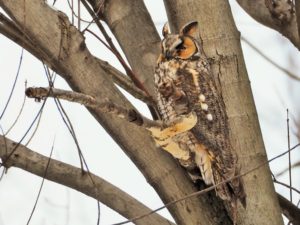
End of January Lake County totals:
Jim: 68
Sarah: 43
Part 3 – Early February, 2020
Jim
The first eleven days of February 2020 had been slow for Big Year birds. January brought me Lesser Black-backed Gull, Iceland Gull, Red-necked Grebe, Snow Bunting, Northern (Common) Raven, Great Cormorant, Merlin, and Cackling Goose. On February 12th my buddy Tim Jasinski (Tim runs the entire ground game for Cleveland Lights Out) texted me an Ohio Chase Birds post about a Pacific Loon being seen from Cleveland Lakefront Nature Preserve. The loon had been found a couple of days earlier by a Cleveland birding buddy of mine, Doug Deppen. Doug never posts, so our mutual friend Lori Brumbaugh photographed this bird after she found it that day and posted it to Ohio Chase Birds.
The Pacific Loon was a nemesis bird in my 2019 Big Year. It was late November and then again early December that I chased a Pacific Loon at East Fork State Park just east of Cincinnati, Ohio. Let me just say that from the Cleveland area to this bird it was a nine-hour and 556-miles round trip. You do the math and then add in that I dipped both times, and it’s ugly. I never got a Pacific Loon last year, and now one is 20 minutes from my house and I’m in CPR class. We finished class early, and I was out the door and arrived at CLNP at 1:19 p.m. It took me a half hour to re-find the bird, but there it was, poor pics and all.
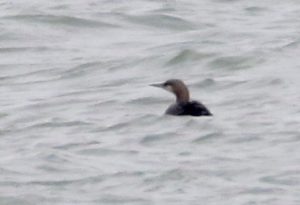
It was then that I saw a message to our birding group from Sarah asking if anyone was going for that bird. I messaged her that I was on it, and in no time she arrived a little out of breath and found it in my scope. Life birds are worth a beer up here on the North Coast. My heritage is mostly British, followed by Irish and then Scottish, so you might say birds and beer are in my blood… just no accent. As Richard Crossley told me a couple of years ago at The Biggest Week in American Birding, “There is nothing better at the end of a long day of birding than discussing birds over a pint.”
Sarah
There was a lull in the Lake County birding action, so I made a few forays into Cuyahoga County in February. Our only Snowy Owl was a one-day wonder, so I went to the famed 100th Bomb Group Restaurant second-floor patio to look for one being seen at Cleveland Hopkins Airport across the street. I knew the lay of the land since this had been the location of the first Cleveland Birds & Beers gathering in January. I scanned all over with my little, ancient scope, checking the runway signs the bird is apt to perch on without luck. I checked the snow piles, and an owl-shaped lump caught my eye. Did I see its head turn? Just then a couple from central Ohio arrived with a better scope. I pointed out the snow pile, and as we were looking the lump flapped and began preening. Score!
On February 12th I planned to visit Cleveland Lakefront Nature Preserve in search of a would-be-lifer Pacific Loon. I wrote a quick message to the Lake county group chat, “Anyone want to chase the Pacific Loon at CLNP or the California Gull at Wendy this afternoon? I’ll drive, you bring scope,” but didn’t receive a response. An hour later as I arrived at the preserve Jim answered that he was there and had found the loon. I hurriedly walked the half mile as fast as my recovering lungs would allow (another rule of Big Year birding: cardio). Jim was still on the loon and let me look at it in his scope. I told him that loon was a lifer, so I owed him a beer. We looked for the California Gull also, but it was nowhere to be found.
After getting a Horned Lark as the third county lifer of the year and adding Snow Buntings to my year list on Friday I made good on my promise that Saturday at Spuddy’s Tavern when I, my husband, Adam, Jim, and Jamie had a fun dinner chatting about birds and birders. Little did we know this would be the last time the four of us would be able to get together at the beloved dive bar for quite some time.
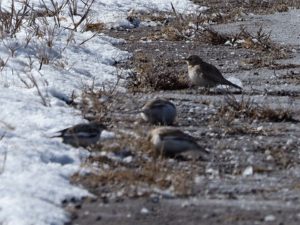
Part 4 – February continued
Sarah
On Wednesday, February 19th I was working from home (before it became the norm) and got word around lunchtime that the second-ever Slaty-backed Gull for Ohio was only 20 minutes away. I sped down the highway to Wendy Park, where a group of birders were observing it. Several of my birding friends were there and offered me great views in their scopes. I can’t believe I got another chance to see this species so soon after my crummy first experience, after which I wrote this poem:
“The Slaty-backed Gull”
Here I’m standing, looking for a gull.
Don’t you want to see it too?
It won’t be as long as the last bird.
Just another hour or two.
Oh gull, this horrible weather.
Oh gull, why are we here?
I swear, I can’t feel my fingers.
What’s up with this weather?
Hand me my field guide.
I almost thought that I saw it.
Don’t you think you saw it too?
Anyway, what does it look like?
The legs are pink, the back is dark.
Oh gull, the horrible weather.
Oh gull, where can it be?!
I swear, I’m leaving this minute,
If we don’t see it.
Where are my car keys?
Oh gull, this horrible weather.
Oh gull, it’s finally here!
Look there! I think I can see it!
Didn’t you just see it?
Look in the scope.
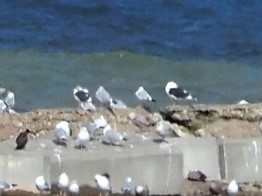
I wasn’t planning to bird on February 29th, but Kari had reported both Glaucous and Iceland Gulls, so we had to check it out. Glad we did! We started at Headlands, where hundreds of gulls were flying around and sitting in the water. I told my observant, non-birder husband, Adam, “We’re looking for a tannish-white gull without black wingtips.” After a brief search, he pointed out a gull fitting the description. It was a Glaucous Gull! I took tons of pictures because I’d never seen one in flight before. What a gorgeous bird!
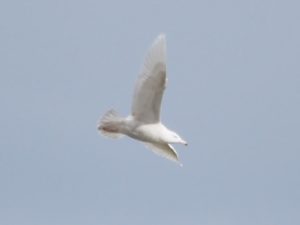
Adam and I changed location to the boat ramp on the opposite side of Fairport Harbor and ran into Erin and Andy Avram. Erin needed Glaucous Gull for her year list, and I needed Iceland Gull for my life list. I relocated the Glaucous and pointed it out to Erin, then she found the Iceland in her scope, and Andy confirmed the identifications. At one point we had both white gull species in the same scope view! It’s fitting that the Avram’s helped me finally get my lifer Iceland Gull, because it wasn’t long before this that Andy had been leading a Lake Metroparks bird walk and he and Erin had noticed an Iceland Gull but couldn’t get me on it and felt bad. This sharing of sightings and helping each other find birds will continue as the year goes on, even though this strategic birding couple will become two of the top competitors in the Lake County 2020 Big Year race.
Jim
The weather on Lake Erie can be at its most brutal during the last half of February, but great birds can also turn up. I patrol every Sunday for the Metroparks and was on patrol February 16th when I was flagged down by a citizen to help a Cooper’s Hawk standing on its prey in the busy roadway. That bird had to be starving to be sitting in traffic trying to pluck and eat the Ring-billed Gull that was too heavy for it to carry far. I intervened, took some pics, got him out of traffic, and reunited him with his prey, and his life went on. Sometimes you see the difference you make.
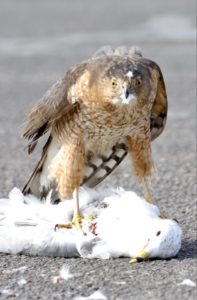
I saw an Ohio Chase Birds post of a Varied Thrush on the evening of February 15th but was unable to go and look for it until Monday, February 17th, due to work. I arrived at Horseshoe Lake in Shaker Heights that morning to find only one other birder, who told me he had been there since sunrise and the bird was nowhere to be found. He wished me luck, and well, it worked. I walked to the place it was last seen the afternoon before, and it flies right in. I look around to see if anyone else just witnessed what I had. Nope, that show was just for me.
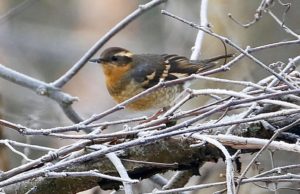
Well, things didn’t slow down. On February 19th Tim Jasinski texted me that a Slaty-backed Gull was at Wendy Park in Cleveland and to “get down here now.” I flew there, almost literally. Not a life bird but a key Big Year state bird. I arrived and saw Sarah there, and she had already scored the bird. Jen Brumfield let me look through her scope (pre-COVID-19). Bingo! I was there for the first- and second-ever sightings of a Slaty-backed Gull in Ohio; then the bird abruptly flew off. I returned the following day and observed the Slaty-backed Gull again. While there I got some poor long-distance shots comparing the size and back colors of the Slaty-backed, Lesser Black-backed, and Great Black-backed Gulls. I also had great looks at Iceland Gulls including the Thayer’s subspecies.
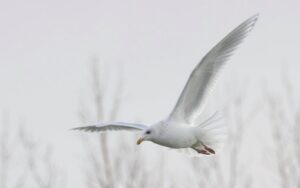
On February 29th I’m out birding Lake County with Jamie and run into Sarah and others at the Fairport Harbor boat ramps, all looking at gulls. While there I see my first-ever Lake County Iceland Gull and another anomaly, a Purple Sandpiper that almost landed on Jamie’s head as he yells out, “Purple Sandpiper!” That’s one heck of a way to end February. Little did we know at the time that the birding life was going to abruptly change in the month of March.
End of February Lake County totals:
Jim: 88
Sarah: 82
Part 5 – March
Jim
Sunday morning, March 1st, started like a regular Sunday for me on patrol for the Metroparks. This was my last day of patrol before flying out early the next day to Sarasota, Florida, for a week of birding with a buddy. I was so done with snow and ice and looking forward to sun and good weather. I was stoked. My only concern was missing out on good birds here and falling behind the other birders. At this point I’m still chasing the “300”.
At 11:34 a.m. I received a text from Tim Jasinski, “PAINTED BUNTING Stark County.” This bird was only an hour and thirty minutes away, so I texted my birding-friendly sergeant, Chris. I actually trained Chris as he came from a local PD after he retired. I also photographed an albino Ruby-throated Hummingbird in his yard last fall. It may be the only albino Ruby-throated Hummingbird to ever be photographed in Ohio. My photograph made the Ohio Ornithological Societies, Ohio Cardinal, Fall 2019 edition. Chris tells me, “We’re good. Go chase it. We have enough folks to cover things. Just let me know if you get it.”
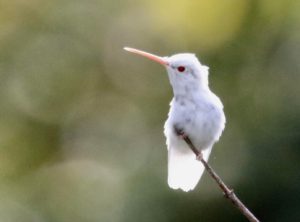
I signed out of service at noon and headed south to find this Painted Bunting female being seen at a bird feeder at an Amish residence. While en route Jamie calls me and is excited to tell me that he and Caitlin just found a Harlequin Duck at the boat ramps in Fairport Harbor. The Harlequin Duck was one of the first state birds I saw in January in Cleveland. At that point in time doing a county Big Year was not even a real thought. It would be a county life bird, but that was not enough to turn me around. The Painted Bunting was a lifer and a great Big Year bird for Ohio. I arrived at the residence well off the main road and was invited inside. The Amish are the kindest birders I know. I was among a half dozen birders already there. Within 20 minutes the bird made an appearance, along with a Carolina Chickadee. Up on Lake Erie we only have Black-capped Chickadees, so that was a bonus state bird that I wouldn’t have to chase later. I took numerous photographs, chatted with all the birders, signed the visitor log, and thanked our hosts for their kindness.
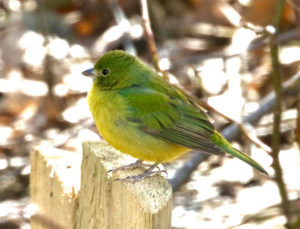
I texted Jamie that I was headed back to Fairport Beach with an ETA of 4:15 p.m. Jamie said the Harlequin was still being seen and he would meet me there. I arrived at the ramps, and there it was, swimming right off the rocks. I took a ton of pics at close range. No time for celebratory beers as I still had to pack for my flight the next morning.
I flew out the next day and back home March 8th. I had a great week of backpacking and birding in perfect weather. Another buddy of mine, Joe, is a respiratory therapist working in south Florida, and he told me he had been treating COVID-19 patients and one had already died. We knew something was up and that danger was at our doorstep. The rest of the month was eventful, but not in a birding way. Stay-at-home orders for Ohio were issued on March 23rd, and everyone was adjusting to social distancing and The Biggest Week in American Birding was canceled. Suddenly birding is not as important as it was. It’s during this time period that a county Big Year comes to light for me as we all adjust. Being a birder became a lifesaver in these trying times.
Sarah
March 1st is my dad’s birthday. I had planned to spend that weekend visiting my parents but instead decided to spend all of spring break with them a week later. So I was fortunately in town when my friends, Jamie and Caitlin, who I’d soon meet for the first time, found a female Harlequin Duck at Fairport Harbor. On our way there I excitedly texted news of the finding to Ray Hannikman, but, mortifyingly, my flying fingers fumbled the word “duck” into a much more offensive one. We arrived and I couldn’t believe how close to us she swam! This was my 5th Lake County life bird of the year.
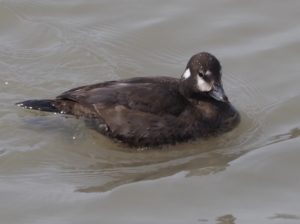
The rest of the week was uneventful, even though Jamie and I joked about having to find a good bird while Jim was out of town.
I spent March 7th to 13th at my parents’ house in Loveland, OH. Being farther south they get the spring migration birds 2-3 weeks earlier. We had a great time birding their favorite hotspots and adding to our year lists. My mom started using eBird in January, so she was building her official life list as well. The evening before the time change we enjoyed a first-of-the-year American Woodcock display at the Cincinnati Nature Center’s Longbranch Farm. My dad and I went to see them again the next night, but we got kicked out before they began because, with time springing forward, the park closed before dusk. We got a great woodcock show with a bonus FOY Barred Owl at another night at Caesar Creek State Park.
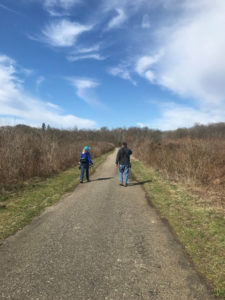
While away I kept an eye on Lake County bird sightings and my top 100 eBird ranking for Lake 2020 but didn’t miss much or fall too far behind. I started watching another set of statistics –coronavirus cases in Ohio. The first 3 positive test results in Ohio were announced that week. The American Chemical Society National Meeting I was supposed to attend in Philadelphia later in March was canceled.
My dad wanted me to stay a couple extra days, but I didn’t want to miss a Pi Day party or church that weekend. I wish I had stayed longer because I didn’t see my parents again for 11 weeks, and of course I haven’t been to a party or church since.
When I returned to Lake County Adam and I picked up a pair of Purple Finches at Holden Arboretum, which was fortuitous timing because they closed to the public for two months a few days after that. On Sunday, March 22nd, Adam and I did a day of birding in Trumbull County to see Trumpeter Swans and other waterfowl at Grand River Wildlife Area. After that we wouldn’t leave Lake County for two months.
End of March Lake County totals:
Jim: 105
Sarah: 104
Part 6 – April
Jim
April started out slow, but as everyone knows the month wouldn’t end that way. Terns, herons, bitterns, rails, shorebirds, flycatchers, warblers, and sparrows start arriving along the north coast. The more time in the field in the month of April, the more prepared one will be for the onslaught of migration that comes in May. Everyone is out there looking for that first-seen bird of the year.
On April 3rd I was birding along Fairport Nursery Road, which is open grassland on both sides for over two miles with Lake Erie on its northern border. I was looking for the first Savannah Sparrow of the year, and there it was, several actually. I pulled off the side of the road and shot numerous photos. Kind of cool, I thought. At the end of the day I was going through my photos and realized several of the sparrows were not Savannah Sparrows at all. It wasn’t until I started to crop my pics that I realized that among those Savannah Sparrows were several first-of-the-year Vesper Sparrows and a darn good county bird. Sometimes we don’t look closely enough at what we are seeing and just assume what’s expected, and that’s when rare birds are overlooked or misidentified. Just something I need to keep reminding myself as migration picks up.
Even if you are in the field every day there are a few birds that can still be missed, and I call them pivotal birds. These include Snow Goose, Long-tailed Duck, Sandhill Crane, American White Pelican, Merlin, Fish Crow and Black Vulture, to name a few. It will be these types of birds along with a freak rarity that doesn’t stay that will ultimately be the difference between the top five big year contenders. These are usually fly-over birds that you must be in the right place at the right time with a smidgen of luck to see.
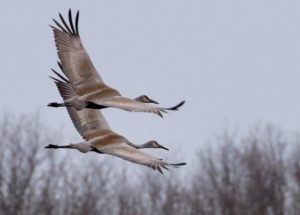
Sandhill Crane flyovers started happening. I finally got lucky and observed a flyover while on the Zimmerman Trail along the Mentor Marsh. The Sandhill Crane appearances became so frequent that everyone got a chance to see them. The next two birds that were much sought-after were the Fish Crow and the Black Vulture. The Black Vulture is easy to identify in flight, but I’ve lived in Lake County for over 30 years and have yet to see one here. The Fish Crow has to be heard to be counted, and I didn’t get one last year within the county. These became nemesis birds for me, as one birder after another was able to get them. Except for finding the Vesper Sparrows and an American Bittern in the first half of April I became a chaser of other people’s birds. This is not a position of command.
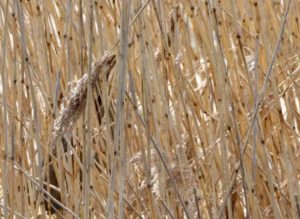
The most exciting in early April was a Neotropic Cormorant found by Andy and Erin Avrum at Headland Dunes State Nature Preserve. I chased this bird last year several times as one was being seen frequently at Battelle Darby Metropark in Columbus. This was a county lifer for me and easily identified at a distance as it is 20% smaller than a Double-crested Cormorant. My pics weren’t great but definitive, and that’s all that mattered. I’m pretty sure it was a county lifer for everyone that day, as I don’t recall it ever being seen in Lake County before.
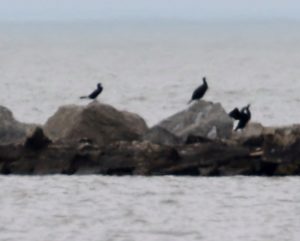
Sarah
For me the beginning of April was spectacular as I managed to snag four Lake County lifers plus a bird that had previously been heard only. On April 2nd I was glad to add Trumpeter Swan to my Lake County list after unsuccessfully chasing one after work in February. The next day Jim reported the Vesper Sparrows, one of which I was able to see and photograph for the first time ever that Saturday. I would see them on several more occasions that month.
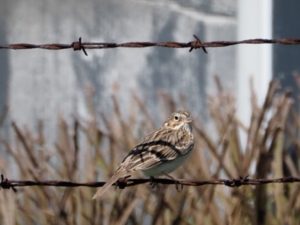
On Monday morning, April 6th, I went to Headlands. I was standing next to my car, listening and listing the birds I heard, when one of the Common Ravens flew through the picnic area and croaked. Not five minutes later a Fish Crow flew by high over the cottonwoods, giving several nasal “ah ah” calls. Boom, another Lake County lifer! An American Crow promptly followed. Corvid trifecta!
On April 9th my husband Adam and I were driving home from North Chagrin Reservation and decided to go to downtown Willoughby so we could spin the numerous PokéStops, resupplying our depleted Pokéball supply (both of us are avid Pokémon Go players). While we were driving along the aptly named Ridge Road overlooking the Chagrin River valley, I was enjoying eye-level views of a Bald Eagle. I noticed a flock of Turkey Vultures when suddenly I saw a distinct flash of silver wingtips. “Black Vulture!” I shouted. I made Adam turn the car around and he drove to a park in the valley below. I jumped out with my camera and started firing off shots of the flying vulture. None were spectacular, but several were sufficient for identification. I had sent a message to the Lake County birders, but shortly after the large black bird soared off over the highway and out of sight. Mine was only the sixth Black Vulture sighting in Lake County this year, and there were only two sightings in 2019. It’s now mid-June, and no one has seen one since, although Jim is determined to get one. I feel fortunate to have seen that bird, a new Lake County bird for me, and the experience cemented another big year rule in my brain: Always be birding!
On April 12th, Easter Sunday, Adam and I decided to do a Lake County big day. Our friends Cole and Chia were also on board with the big day idea, becoming our competition. Adam and I started close to home at Veterans Park at 7:15 a.m., hoping for a Eastern Screech Owl that seemingly everyone had seen but striking out as had been the case. It was pouring rain, so we moved to Mentor Lagoons and bagged 24 species from our car. Next, after the rain let up, was Wake Robin Trail, which yielded an American Kestrel, Peregrine Falcon, and Virginia Rail, but no Sora. Continuing to work our way east we hit the Shipman Pond area of Headlands Beach State Park, obtaining 55 species, the biggest checklist of the day. Notable species there included a surprise Wilson’s Snipe, a Merlin (falcon trifecta for the day!), and two Black-crowned Night Herons. At the nature preserve section of Headlands we had backlit looks at a first-of-the-year Pine Warbler and then headed home for an obligatory bathroom break (since none were available) and lunch.
After lunch we were hiking the Zimmerman Trail, hoping for Red-headed Woodpecker usually seen just under a mile from the trailhead, when the message about the Neotropic Cormorant popped up. I had broken my “never get too far from the car” big year rule, so it was a long, stressful hustle to get out of there. When we arrived all our Lake County birder friends were there, practicing social distancing as best they could. We enjoyed great looks at the small cormorant through my new scope I bought in March as a reward to myself for being promoted to full professor.
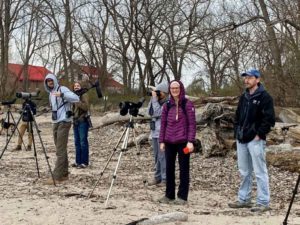
Then it was back to the business of our big day. We hiked the other end of the Zimmerman Trail, hearing a Barred Owl, seeing the Peregrine Falcon again and six woodpecker species, but missing Pileated Woodpecker. Black-capped Chickadee was the biggest miss of the day. We swung by Mentor Lagoons on our way home for Easter dinner with my family via Zoom and picked up Purple Martin for our final and 85th species of the day. Cole and Chia had 95 species for the day and, according to Ray’s records, April 12th was now the earliest date the birders of Lake County had collectively seen over 100 species in a day.
Part 7 – April continued
Jim
In April many Lake County birders were looking for Yellow-headed Blackbirds and fly-over American White Pelicans. Adding these to your list involves sorting through flights of blackbirds looking for gold and keeping an eye on the sky for pelican silhouettes. On April 14th Josh Davidson was the first to report pelicans when a flock of twenty flew over the north end of Mentor Marsh. Only a few people saw that flock, but everyone else got their chance on April 17th, when Caitlin saw a Birding Ohio post from Nan Patrick of an American White Pelican on the water at the Mentor Lagoons. Everyone raced there, and no one was disappointed. It hung out a couple of days.
On April 21st I had just found my first Bobolinks of the year at Indian Point Park, when Tim Jasinski texted that there was a Barn Owl at Erie Street Cemetery in downtown Cleveland and to “Get It!” Downtown is less than 20 minutes from my house, so I considered that a chasable area, even under current travel restrictions. I posted my Bobolink find to the group and advised them of the Barn Owl and that I was heading there. I arrived 40 minutes later and the owl was in plain view for all to see. That’s when the Cleveland Police arrived, as they had heard that a rare bird was drawing a large crowd. Due to the pandemic, CPD’s two-person police cars were now single-person units, and two cars were being dispatched to every call. It was quite a sight to see all these police cars rolling in, eight in total. I spent a half hour discussing birds and birding with a couple of the cops.
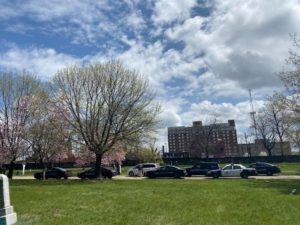
While at the cemetery I ran into Josh Davidson and his dad trying to locate a sparrow moving through the grass like a mouse. Its behavior was odd, but Josh thought it would be a Chipping Sparrow. It took concentration, but we were finally able to see it. I grabbed a quick shot as Josh says, “Henslow’s Sparrow. You good with that ID?” “OMG, yes!” was my reply. Josh is 17 or 18 and already one hell of a birder. Last year I found Henslow’s Sparrows at Batelle Darby Metropark in Columbus but never got a decent glimpse, let alone a photograph. This was a good Ohio bird I’d have never seen if Josh had not been chasing it around.
On April 25th the group gets a kick in the pants from Sarah as she relays a report of a Glossy or White-faced Ibis seen from the parking lot at Mentor Lagoons. The next message I see is from Caitlin, who says she is on site, has eyes on the bird, and believes it’s a Glossy Ibis. The race is on. I couldn’t find a Glossy Ibis anywhere in Ohio last year, and I chased one several times. I didn’t want to miss this bird as it would be a Lake County lifer for me. Jamie and I were about the last to arrive, but most of the Lake County crew were still there scoping the bird. The bird is an Ibis, but it’s too far out to distinguish Glossy vs. White-faced. Jamie and I headed to Becker Road for a closer look and photographs. It looked like a Glossy Ibis to me. Jamie and I get some better photographs to attach to our checklist and to update Ohio Chase Birds. Numerous folks submitted eBird reports with their descriptions and photographs of the ibis. The sightings were accepted even before a better diagnostic photograph was taken a couple of days later from the kayak of a local photographer. Kayak! A light goes on in my head about using mine to get better views of shorebirds when they come back through, starting in July. I needed to renew my kayak registration before I can put it on the water. Sarah and Adam mentioned plans of obtaining kayaks themselves. It’s like having a spotting scope in your arsenal, you may not use it every day, but when you do, it’s going to give you a leg up on the competition, especially in the marsh.
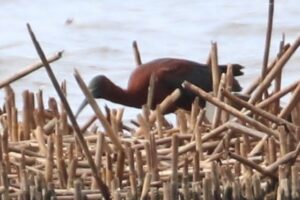
April 28th, I’d just visited the magic dumpsters (more on this later) near the Headlands maintenance area looking for a reported Northern Waterthrush and Blue-winged Warbler. I struck out at the “not-so-magic“ dumpsters and walked up the road toward Zimmerman Trail. In the parking lot by the trailhead I observed a FOY Orange-crowned Warbler. I texted Sarah and posted the sighting on messenger. Birders flocked to see this hard-to-find spring migrant. Unfortunately I lost sight of the bird when sending out messages and could not relocate it. Of all the folks that showed up, only Tony Gazso was able to relocate the warbler for a brief look. There is nothing worse on a notable find than the finder being the only person to see the bird. In the next couple of days almost everyone will refind the Orange-crowned Warbler, but its significance diminishes with the craziest day of spring coming the next day.
The bird migration forecast for overnight on the 28th-29th looked amazing, and we were not disappointed the morning of April 29th. Before I could get out of my truck at Zimmerman Trail I was advised of a Least Bittern, a great bird anywhere in Ohio, showing at Headlands Dunes State Nature Preserve, so I went there first. Within five minutes the bittern and I were looking at each other face to face. I got some great shots just before it flew into the wet area of the dunes.
Things got crazier after that when I met up with Sarah and Domenic Rocco. Sarah was notified by a birder leaving that she thought she saw a Long-eared Owl but wasn’t sure because it was very light-colored. Sarah believes it wasn’t a Long-eared Owl at all but a Barn Owl. I’m skeptical but agree to look. We split up to cover more ground and I walk around a brushy dune and there it is! Boom! It takes flight heading south. Damn, Sarah was right!
I don’t know what to do but give chase to grab a pic or see where it goes. These dunes are very brushy with little to no visibility, so I immediately lose it. Within 100 feet I run into Roger and Ray, and they tell me they just saw a Long-eared Owl flying north. This makes no sense to me and I tell them about the Barn Owl I kicked up that flew south. I tag along with them and go back south only to run into Sarah and Domenic, who tell me they had a Barn Owl flying. I tell them I just kicked one up about the time they saw it and that Roger and Ray are currently looking for a Long-eared Owl they saw in flight.
We separate again and go looking for the Barn Owl. I’m back in the brushy dunes and hear Blue Jays screaming within this thick bush. So I get on my hands and knees and crawl in looking for the Barn Owl when I come face to face with a Long-eared Owl perched almost on the ground. The owl immediately takes flight. I yell out and someone else says they have a Long-eared Owl that just landed in a tree not 200 feet from where I had discovered one in the bushes. While I’m standing there looking at the perched owl another Long-eared Owl flies into the same tree as the first one. This owl is light-colored. I get pics of both owls in the tree together.
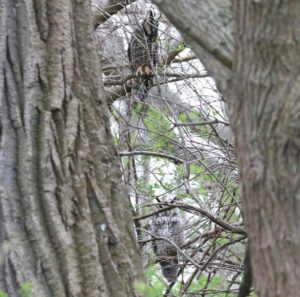
You are probably asking, “Are you sure you saw a Barn Owl to begin with?” I’ve seen several Barn Owls in the last few years including finding one last winter at Cleveland Lakefront Nature Preserve and had just seen another the week before. There is no doubt about that first owl being a Barn Owl, and it was also seen by Sarah and Domenic in a separate location after I flushed it.
We have three owls of two different species, but the day gets even better. While I am trying to relocate the Barn Owl and get some pics, Sarah, Ray, and Roger kick up two Eastern Whip-poor-wills which I hear call. Talk about being physically drained from a full day of birding before 2:00 p.m., but the day still wasn’t over.
I’m thinking about taking a well-deserved lunch break when Domenic messages the group from Mentor Lagoons with pics of two Little Blue Herons he has a half mile in on the Marsh Rim Trail. There is no time for a break now. Little Blue Heron in Lake County is another anomaly and a great Ohio bird. Someone else finds a singing Prairie Warbler back at Headlands, and we get several good photographs. By now I’m thinking I should have done most of my big year in Lake County last year and I would have saved a ton of gas and wear and tear on my truck.
April 30th is another great day of birding the Headlands with warblers, vireos, and flycatchers still arriving. Roger finds a roosting Whip-poor-will that stays there for twelve hours, so even Jamie gets to see it after work. All this excitement, and May doesn’t arrive until tomorrow.
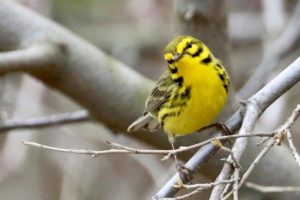
Sarah
Besides the American White Pelican and the Glossy Ibis, the birding in mid-April was slow and only yielded a handful of year birds. The last week, especially the last three days, however, was off the hook. In those three days I gained 29 Lake County year birds, five of which were Lake County lifers.
One of the biggest sightings occurred on April 26th when Andy and Erin had eleven Marbled Godwits fly around Mentor Marsh and briefly touch down. Adam and I arrived within 10 minutes, but they were gone. I couldn’t believe I missed such an awesome bird. There were only a handful of sightings in the county ever.
The end of April was when the magic dumpsters began to produce. There is this area between the Headlands Beach parking lot, which was super flooded, and Mentor Marsh that was just a little strip of woodland. Next to that was a maintenance area with dumpsters, and behind those dumpsters was nothing more than a puddle, but all kinds of FOY birds appeared in or around the vicinity of that puddle: Blue-grey Gnatcatcher, Northern Waterthrush, Blue-winged Warbler, Ovenbird, Cerulean Warbler, Yellow-throated Vireo, and Prothonotary Warbler, to name a few. Some people were checking the puddle every morning at dawn.
Just after dawn on April 29th Caitlin reported a Blue-winged Warbler in the maintenance area. Domenic and I ran into each other there and began earnestly searching for the bird that would be a lifer for him and a Lake County lifer for me. While there we ran into Ray, who told us Roger found a Least Bittern in the Headlands Dunes area. It was almost a mile, but we decided to walk and look for birds on the way.
We arrived, and I was struck by how tiny the Least Bittern looked way up in a tree out in the open, like a leaf with the bill being the stem. Roger has a knack for finding hard-to-see birds and says that he “looks for something that doesn’t belong.”
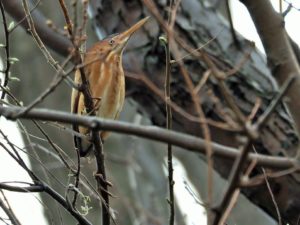
Right after this we ran into Jim, got the tip from Kathy about the owl, and chaos ensued. After we split up in the bushes, Domenic and I ended up in an open area with Jim still searching within. I kind of thought Jim might inadvertently flush something, so we had a good vantage point. Suddenly a pale, heart-shaped face came flying out of the bushes right at us! I was torn between camera and binoculars, but I heard Domenic’s camera clicking away, so I kept watching through binoculars. In the moment, I was thinking, “Ears or no ears? No ears!” The bird swerved past us to the left, away from the lake, and I got a good look at the tawny-speckled body and said, “Oh wow! It IS a Barn Owl!” It was at this point I began to think maybe I was able to conjure up birds by thinking or talking about them.
As quickly as the owl disappeared, it reappeared (or so I thought at the time) like a tennis ball being returned, flying back in the opposite direction, apparently right over Ray and Roger’s heads, but I didn’t get my binoculars on it. They emerged from the bushes claiming to have seen a Long-eared Owl flying overhead toward the lake just then. It was then that we told them about the Barn Owl, and Jim came out of the bushes, corroborating our sighting. But there couldn’t be two owls, could there?
Rumors about owls had begun to circulate among the birders in the vicinity. I sent this message, “Barn owl coast guard gravel road headlands. It flew past and trying to relocate.” Right after that I texted Adam, who was working from home, that exciting things were happening and he might want to come here for lunch.
After flushing the Whip-poor-wills I headed toward the parking lot to meet Adam. On the way I looked back down the trail to see Nan gaze intently up into a tree and pick up her camera. I walked quickly back to see what it was, and it was a Long-eared Owl! It was immediately flushed by jays, though. Caitlin sent a group message, “Long-eared Owl Headlands” to which I replied, “This is insane!” Cole, who was trying to make sense of the situation from college messages, “So different bird from barn?”
Adam arrived and as we walked into the dunes area we could see birders gathered by the same tree. We walked up to see not one, but TWO Long-eared Owls perched there. They stayed long enough for me to get a picture of one. Adam said he saw one of them and I was so glad, it was a lifer for him. After lunch, Adam helped me find the Blue-winged Warbler, which, along with the Barn Owl and the Whip-poor-will, was my third Lake County lifer that day.
Unfortunately I had to teach my organic chemistry class via Zoom that afternoon and hold office hours. While I was teaching a pair of Little Blue Herons and a Prairie Warbler turned up. Adam and I found the herons at dusk in the rain, but the Prairie Warbler will end up being my biggest miss of the spring.
The next morning I was at Headlands early, hoping the Prairie Warbler would still be around. My friends Nick and Mary were looking with me when I heard a strange noise. I looked toward the sound and saw a large flock flying west along the shore. I pointed and shouted, “Shorebirds!” and took pictures, only two of which managed to focus on the far-away flock. I looked with my binoculars and could see the distinct black-and-white wing pattern of Willets on most of the birds.
I was hoping they would land, so I messaged the group and ran toward my car. In the parking lot I ran into a group of birders and Jim, who had just arrived after having a nice big breakfast. We drove down to the west end of the beach but didn’t find any shorebirds.
Other highlights for April 30th include the perched Whip-poor-will and a Cerulean Warbler that Adam spotted during the evening when we went looking for it again after seemingly everyone had seen it earlier.
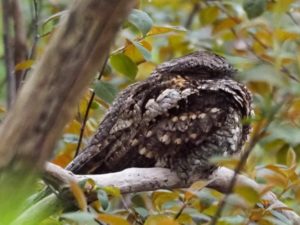
Late that night I was putting my pictures on eBird and was cropping the pictures of the shorebird flock when I noticed the birds in one of the pictures didn’t have any white on their wings and had long straight bills. I blew up the picture more, I was shocked and then I laughed and laughed… Oh my godwits!!
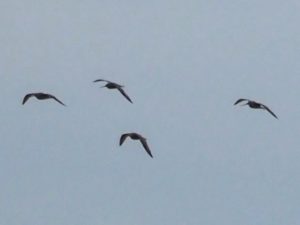
End of April Lake County totals:
Sarah: 177
Jim: 168
Part 8 – May
Jim
May 1st, I added a Cerulean Warbler, once a common nester at Indian Point Park but now only an uncommon migrant. A great find for May 1st; unfortunately it will be the only Cerulean Warbler I see this spring. The day got better when I see a group message from Caitlin saying she had eyes on a Yellow-throated Warbler on the Lower Marsh Rim Trail near the parking lot at the Lagoons. This bird is even more uncommon in Lake County than a Cerulean Warbler, so off I went.
I’m met by a Lake County birder all the locals know. I asked her if she got the bird and she says yes and that she got some great photographs. I ask where the bird was currently located, and she asks me if I knew where the Little Blue Herons were found a couple of days prior, and I say, “Yes, just past the wooden bridge.” She tells me the bird is way past the wooden bridge. I know that location is more than half a mile away, so I take the flat main trail rather than the hilly Lower Marsh Rim Trail. Saving time is often the difference between getting the bird or not, so off I went, doing double time and carrying my camera gear as well.
I’m huffing and puffing trying not to miss this bird, and now I’m well past the bridge but still no birders in sight. That’s when I get a call from Caitlin asking me where I’m at and I tell her. Caitlin says, “I told you we are on the Lower Rim Trail right next to the parking lot.” I tell Caitlin that I just ran into “that birder” and she told me the bird is well past the bridge. Caitlin says “that birder” was with her on the Lower Rim Trail and they saw it together. Damn! Now off I go in the opposite direction, and finally I meet up with Caitlin. Caitlin tells me they lost track of the bird and were trying to re-find it. I see Sarah and think my luck will change now because she will find it, she has that kind of luck. I ask her if she got it and she tells me she has already seen it. Damn, so much for the luck! Sarah goes on to tell me that she was on the bird when she saw me hustle by on the main trail and she asked Caitlin where I was going. It then hits me that I was misdirected on purpose. I can’t believe that nice older lady did that to me. I guess the competition really is stiff in this County Big Year, and I just start to laugh; it was awful, but it was also damn funny. We never re-locate the Yellow-throated Warbler that day, and I know this may be my biggest miss this spring. It was unbelievable, but it was still damn funny. I thought I took birding seriously. The next day the bird is re-found, and not only do I get a glimpse, but I also take a couple of good photographs.
The first five days in May numerous new birds are added every day. On May 5th I get a message from Sarah about a Yellow Rail sighting at Wake Robin Trail and that Roger had found it and got some good photographs. I was home at the time taking a break. I just told my roommate that I wasn’t going back out unless somebody found a rare bird. Now I’m grabbing gear and running out the door, and my roommate just shakes his head. I haven’t seen a Yellow Rail since the fall of 1986 or 1987 as I birded the east coast with Doug Overaker. We flushed that bird at Cape Hatteras, and it’s the only Yellow Rail I’ve ever seen.
I arrive to find the Wake Robin Trail parking lot full and must park along the roadway. I hustle down the trail, message Sarah, and she advises that she’s at the end of the boardwalk and they have yet to re-find the rail. There is a lot of bird activity at the beginning of the boardwalk, and I can’t walk past without looking. The first bird I glass is a Clay-colored Sparrow. It’s singing, and I take pics. I message Sarah, and she hustles down the boardwalk as this bird is a Lake County Lifer for her and she’s only seen one before. Sarah doesn’t get it right off but does within a half hour. After this excitement we refocus our efforts on finding the Yellow Rail. I was somewhat prepared and brought my birding stool with me as this wait could be long.
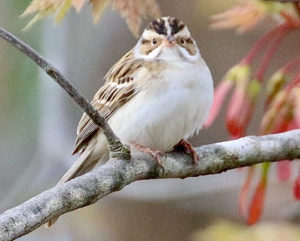
As I’m sitting there my hands start getting cold, and I realize that I’ve left my gloves in the car. I will just have to get by as I’m not leaving until that bird is re-found. All these birders are on a very narrow boardwalk, so everyone is wearing masks, neck gaiters, and a couple of oldtimers are wearing stocking masks. One of these birders is talking to Ray and Jerry, but I’m not sure who it is even after chatting with him a bit. This guy then leaves and returns a few minutes later and brings me a pair of gloves from his car. I can’t believe this guy. I later learn that he was none other than Cleveland birding legend Larry Rosche, the author of Birds of the Cleveland Region. Larry was one of the first birders I met upon moving to Lake County 31 years ago. I had not seen him in years, and that’s how uncommon a Yellow Rail is in Lake County, it brought Larry out. I stayed for several hours but couldn’t take the cold any longer and left the wait to Sarah and the Avrams. The Clay-colored Sparrow remained for several days and was seen by almost all the top 10 Lake County birders.
It’s May 10th, and all the top birders have been birding non-stop every day. The only new year bird I added was a Lincoln’s Sparrow. I received a text from Tim Jasinski about a Red-necked Phalarope at Rocky River Reservation’s Little Met Wetland in Cleveland. This bird was 40 minutes from my house, a bit of a stretch under current travel restrictions. Things were slow and it was early afternoon, so I could possibly chase it. Sarah and Jamie had also quit birding for the day, so I wasn’t too concerned that something would pop up. What were the odds of anyone coming up with a rare bird this late in the day? So off I went driving to Cleveland’s west side, when I get a message from Sarah asking if Jamie or I were interested in looking for a Sedge Wren at Lake Erie Bluffs. I decline and let her know I’m chasing the phalarope.
Just before I arrived at the wetlands Sarah messages everyone that she and Adam had found the Sedge Wren previously reported at the Bluffs. I’m committed now and over an hour from the Bluffs. I continue to Little Met Wetland and immediately see a group of birders and pull off the road. I get out and there it is. Red-necked Phalarope is a lifer for me, and I can’t believe how tiny this bird is in real life. I can’t stop watching or photographing it, but I realize if I want to try to get the Sedge Wren I better head back.
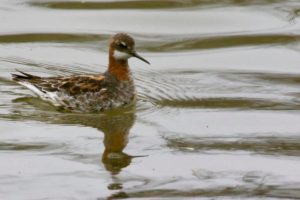
An hour and twenty minutes later I arrive at Lake Erie Bluffs with no birders in sight. Sarah gives me good directions, and I start walking a drainage ditch and flush the wren 50 feet from the parking lot. I can’t recall the last time I saw a Sedge Wren but bet it’s been over 30 years. The wren flies in close, and I get a great look as it is sounding off like a toy machinegun. I watch it for a while flying in and out of cover. I continue to walk around the field and find another Sedge Wren a hundred feet from the first. As hard as I try, I can’t get it to sit still long enough to get a photograph. As I get ready to leave Andy and Erin arrive. Erin had found the bird earlier and was bringing Andy to find it after he got off work. The Avrams find it easily. I will have to be more careful from now on when I consider chasing out of county birds, especially in the month of May. If I had missed this bird the other top four birders would have moved up the list without me.
The first 10 days of May were amazing. I added 27 new birds for the year, and there is not enough time to write about all of them here. The month of May is young, and there are more good birds to come.
Sarah
The first day of May offered up a Yellow-throated Warbler, the first of five Lake County lifers I got in the first ten days of May, which also included 20 Lake county year birds. The other county lifers were Clay-colored Sparrow, Prothonotary Warbler, Sedge Wren, and one more you’ll have to read about below. Throughout May, Jim, Erin and Andy Avram, Josh Hargrave, and I leap-frogged each other in various places within the top five positions in the Lake County Big Year competition. With so many birds to be had the daily standings were meaningless, and it would all come down to who was on top June 1st when things slowed down.
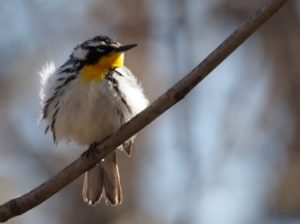
May 5th started out like a normal spring birding day. My friend Deb and her husband Mark came over from Cuyahoga County to see the Little Blue Herons that continued to show well at Mentor Lagoons. We saw them immediately and birded the entire area the rest of the morning. I went home for lunch and a bathroom break as had become my custom.
While I was birding Lagoons my friend Roger was alone at Wake Robin Trail, just a couple of miles farther east in the Mentor Marsh. He observed a rail at point-blank range completely out in the open for 11 minutes and took about 20 pictures of it. He thought it was a funny-looking Sora, so he emailed a picture to Ray. When Ray awoke from his afternoon nap he was shocked to find a picture of a Yellow Rail in his inbox.
I got word and arrived on the scene around 2:30 p.m. to find Roger and Jerry looking for the rail. Roger told me the story, pointed out the location where he saw it, and proudly showed me his awesome photos. It was unbelievable! According to eBird, there are only three other sightings of this secretive species in Lake County, and none include photos. The eBird description of Yellow Rail includes: “Almost never seen in the open” and “If you’re looking at a rail in the open, it’s almost certainly not a Yellow Rail.”
Because it would cause quite a stir, only a few local birders got the news. I messaged Jim, who immediately headed there. I said, “Act like you’re just coming here like normal.” He hadn’t seen one in over 30 years. Local birders began to arrive until there were about a dozen of us spread out along the quarter-mile-long boardwalk. The Avram family had postponed the dinner they had been preparing and shoved everything back in the fridge.
So began the longest bird vigil I’ve ever held. After work Adam brought my parka that I put on over my light down jacket. He opted not to stay. I should have had him also bring food. We were all standing there staring into the marsh, hoping to hear its rhythmic tapping call over the icy wind, except Jim and five-year-old Ophelia Avram, who had little chairs to sit on. I was afraid to sit on the boardwalk for fear I’d be too slow getting up and miss a brief glimpse.
The Avrams had wisely decided to go back home and eat their dinner. Several of us were taking a break from the wind in a sheltered area at the beginning of the boardwalk when suddenly the entire Avram family rushes down the hill, coming in hot, obviously panicked. Andy shouted, “What are you guys doing? Did you see it?” I had become pessimistic and replied calmly, “Nobody’s gonna see that bird.” “Jerry’s on it right now!” was Andy’s response. “What?” The group rushed a bewildered Jerry who was not, in fact, on the bird. The Avram family’s dinner had been interrupted again for nothing.
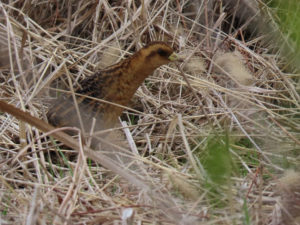
The confusion had been caused by a series of texts. Jerry, who had been keeping Cleveland Metroparks naturalist Jen Brumfield apprised of the situation, sent her one of Roger’s pictures in a text without explanation. Thinking it was Jerry’s picture, Jen texted Andy saying, “Jerry’s got point blank views. Get there now!” The Avrams’ dinner had been interrupted twice by the same bird.
As the evening wore on it reminded me of the Survivor challenge where contestants stand on top of poles to outlast competitors and win a million dollars, except the stakes here were a once-in-a-lifetime bird sighting and, if the competition left too early, a bird ahead of the rest in the county big year race. A few of us, including me and the Avrams didn’t give up until around 9:00 p.m., when we finally agreed to leave.
The next morning I slept in and enjoyed a nice breakfast. About 9:30 a.m. Chia reported a possible Laughing Gull at Lagoons. Franklin’s Gull was still a possibility at the time, but either bird would be a Lake County lifer for me. By 10:00 a.m. it was confirmed as Laughing Gull, and Jim had gotten good pictures. I had just enough time to get out there, search for the bird, and be back home by 11:15 a.m. to wrangle my cat, Woodward, for his noon vet appointment.
When I arrived Erin was watching a flock of gulls in flight well back in the marsh after having scanned everything close. The pressure was mounting as we focused on the flying birds. I spotted one that was obviously darker mantled. With intense concentration we tracked the gull as it flew all around and finally circled in close and flew in front of us. We both got decent flight shots, and Woodward and I made it to his appointment on time. Unfortunately the Laughing Gull didn’t stay long, and Andy wasn’t able to get it after work, dropping him down to two “good birds” below his wife.
Part 9 – May continued
Jim
Shorebirds in Lake County are hard to find as habitat is limited. We have Headlands Beach State Park with its mile-long beach on Lake Erie, which yields some shorebirds but usually only single birds, Fairport Harbor Lakefront Park, another beach on Lake Erie that’s a quarter the size of Headlands, and a few locations in Mentor Marsh. Access to the marsh is limited by private property, so this too reduces chances of finding shorebirds. I already missed Sarah’s godwits by having breakfast before heading out that morning, arriving one minute late.
It’s May 11th, and I hit the Lagoons side of Mentor Marsh scoping for shorebirds. Lake Erie has been high the past few years, so there are no mudflats, only little islands of sparse vegetation. I see a shorebird working a foot away from an island. I see its down-curved bill well and that it’s feeding with its butt tilted up. There’s no doubt in my mind it’s a Stilt Sandpiper, even at great distance. I also find Dunlin, Semipalmated Sandpipers, Semipalmated Plovers, and a Pectoral Sandpiper. I put out a message to the Lake County birders advising that a Stilt Sandpiper is here. Stilt Sandpipers are rarely seen in spring, so this is a prized find and I don’t have to chase it. Sarah messages back “I’ve actually never knowingly seen a Stilt Sandpiper ever.” That right there is a free beer for a lifer. My day is looking up.
After sending out the message, I can’t re-locate the Stilt Sandpiper. Andy and Erin show up first and then Sarah. For the next hour no one can find it. I stay to help, but it isn’t re-located. I’ve said before that there’s nothing worse than finding a good bird that no one else can see. The only consolation was that everyone got views of the other shorebirds. The next morning most of us meet up at Shipman’s Pond, as two Black Terns were found there by Ray. It was here I learned Josh Hargrave found the Stilt Sandpiper that morning before coming to get the terns. I feel vindicated. The Avrams help Sarah find the Stilt Sandpiper later that day, finding two Stilt Sandpipers, and someone else gets that beer.
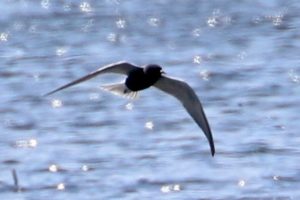
The morning of the Black Terns was a busy one. First Erin reports a Ruddy Turnstone on the beach near the nature preserve, then the report of two Black Terns at Shipman’s. Now it’s break time…nope, Cole DiFabio reports a Kirtland’s Warbler found by Stephanie Secic at Headwaters Park. This is Geauga County, but I can’t resist chasing it, being only 30 minutes from home. Domenic and Caitlin also chase. I arrive around 2:30 p.m. and Domenic arrives shortly thereafter. When I arrive they are trying to re-locate the bird. I see movement, and I think I have it. Within a few seconds three of us are on the Kirtland’s Warbler. Domenic finds the Kirtland’s shortly after I did, but Caitlin arrives two minutes too late. This was my third year in a row to see a Kirtland’s Warbler in Ohio. During those same years I never saw a single Golden-winged Warbler. It’s amazing how things change, and a lot of that change has not been for the better.
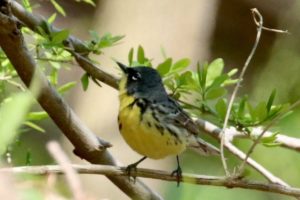
It’s late May and Mourning Warblers are just making an appearance. We find Mourning Warblers at the Lagoons, Headlands and Lake Erie Bluffs. Most of these birds are found by song. What no one has seen is the elusive Connecticut Warbler. Jamie and I birded together on May 24th and 25th and both had exciting days. On the 25th Jamie and I decided to go to Lakeshore Reservation because of its past history of Connecticut Warblers being found there and its lack of birding pressure this year. Jamie and I don’t get more than 200 yards from the car when I see a Gray-hooded Warbler. I get eyes on it briefly, and there are no black chest markings and it may have an eye-ring. The bird flies and disappears but both Jamie and I saw where it landed in the thick plants and brush. I tell Jamie this could be a Connecticut but I need to see it again before I post it, as I needed to be absolutely sure. The bird flies up on a branch two feet off the ground. It stays only a second, but I get a great view and see a nice eye-ring. Jamie only sees it flying away. I put out a message to the group of the bird’s location. Sarah and her friend Matt are the first to arrive, having come from the other side of the park. It takes an hour, but Sarah and Jamie finally get good looks at the bird. I post again that the Connecticut now has been seen by four. When I am leaving I see the Avrams arriving, and within five minutes they have the bird. I’ve had a lot of good finds this year, but this Connecticut was the only one found in Lake County this year, and all the Lake County contenders found it more easily than I did. It has been an amazing spring.
It’s now May 27th, and this day turns out to be extra special. Sarah and I are birding together, so I have the best witness as she is currently the Big Year leader. We check the Headlands Beach area and are walking to the Headlands Dunes Nature Preserve when we hear a crow call. Sarah and I look at each other and at the same time say, “Fish Crow!” All the top county birders have this bird but me, so this is an awesome late-season find. Sarah and I both look up but can’t find the bird anywhere. I ask Sarah, “Can I count that?” While discussing the merits of the situation we find the crow hidden in the tree above us. Bingo! This Fish Crow hangs out for several hours, and I take a short video of it. This was a critical find for me and keeps me in the top four of the Big Year birders, all separated by only three birds. This contest is a long way from being over. I end the month of May with 231 bird species for Lake County and 252 species for the state of Ohio.
Sarah
Every May Adam and I spend a night camping at Lake Erie Bluffs. I love to sleep to the sounds of the waves and wake up to warblers. On May 24th I was awakened around 5:30 a.m. I slipped out of the tent and birded the campsite and nearby trails until Adam got up. At 7:30 a.m. we met Jim and Jamie in the parking lot, where we had a dozen donuts stashed in our car for the four of us.
Fueled up we began the search. We scoured the entire park, looking for any warbler species we had not seen this year, which at that point was Connecticut, Golden-winged, and Kentucky. Jim was especially keen on locating a Kentucky Warbler since he found one last year in Lake County. We heard a particularly loud call that sounded promising, but it turned out to be a Carolina Wren. False alarm.
A Yellow-breasted Chat was reported at Headlands, and I began to stress. Everyone else was there. A few people, including Jim, had already seen one at Lagoons in early May, but I had missed it. I didn’t want to miss this one. Jim convinced me that continuing to bird the bluffs was better. I can chase that one later, or maybe one will appear at the bluffs in summer.
After birding half the park we heard a loud tur-dle tur-dle tur-dle tur-dle song from deep in the brush. It was loud like the wren, but distinctly two syllables. We were all thinking the same thing. Jim asked if I thought it was just a Mourning Warbler. “It’s pretty loud,” I replied. He thought for a second and then practically dove into the bushes. I charged in after him. Adam and Jamie, somewhat skeptical, stayed on the path. The brush was so thick that I thought there was no way we’d see this bird, so I recorded the song with my phone. I thought I only recorded 30 seconds and put my phone in my pocket. What I didn’t realize was I recorded the most exciting 6 minutes of the day, which began like this:
Me: “It’s walking on the ground, unless that’s a Common Yellowthroat.”
Jim: “What’s that?”
Me: Oh my gosh, it is, I see it! I have eyes on it! It is a Kentucky.
Me: (softly) Holy s**t.
Me to Adam and Jamie: You guys, it’s real!!….It’s real, the Kentucky!
The rest of the recording is me laughing, lots of loud pants, shuffling noise, and the four of us directing each other to views of the bird, which we all get plus diagnostic pictures. It ends with me saying, “Oh” when I realize I recorded the whole incident.
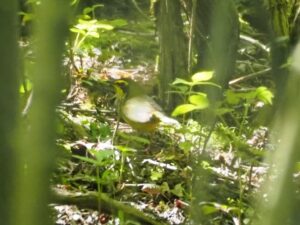
We got the word out once we had photographic evidence (Kentucky Warbler is rare in Lake County). One by one seemingly everyone was able to at least hear it, and some even saw it, although we posted the only photos. Even Andy was, amazingly, able to get it as well as the Yellow-breasted Chat later that evening after work. After he mentioned seeing the chat, I went out for it again after dipping on it in the afternoon. I was able to get great views, but only a couple of crummy photos because I had to run back to my car to switch out a dead battery.
The next day Adam and I were fixing dinner when Andy messaged that a pair of Dickcissels were found by Jeffrey and Stephenie Bojc at a newer section of Mentor Park called Springbrook Gardens. Since there are only a handful of records for it in the county, this bird wasn’t really on my radar as a possibility, even though one had visited someone’s feeder in April. The park is less than ten minutes from our house, so I zipped over there immediately. I could hear the dick-dick-dick ciss-ciss-ciss song through my open car windows. I said hello to the birders that had gathered for the occasion, took a few pictures, and then headed back home to eat. The Dickcissel was my twelfth Lake County lifer in May.
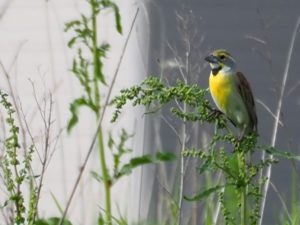
The standings at the end of May are significant because by June 1st spring migration is over. By May 31st I had managed to work my way up to the top spot in the Lake County 2020 Big Year competition, but Erin was only one bird behind, and her husband Andy and Jim were tied for third place and only three birds behind me. Fall migration might give folks a chance or two to catch up by getting a bird they missed in spring, like the LeConte’s Sparrow on May 14th that was only seen by the Avrams, but some birds are gone for good. Or are they?
End of May Lake County totals:
Sarah: 234
Jim: 231
Part 10 – June
Jim
I added my 231st county bird on May 27th and knew spring migration was basically over. I had 33 species of warblers and all the expected flycatchers including Olive-sided. I basically cleaned-house with numerous unexpected rarities as well. The last new bird I added was a late season pick-up of a Fish Crow, which tied me with Andy for 3rd place.
Sarah had gone to Toledo to bird with her parents for the last two days of May. Every year I would go to the Maumee Bay State Park to camp and bird the Toledo area. That got me thinking about how much I missed chasing. I also knew Sarah would be upping her state list and I didn’t want to be left behind. This late in migration also meant that the odds of a new Lake County bird showing up were unlikely until the shorebirds started returning in July. My plan was hatched and I would head to Toledo on Monday June 1st. Sarah kept me apprised of the birds she found and their locations down to specific parking lots and trails.
My trip was just a day trip to get as many new species as possible. I was shooting for six species and none of them were a given, even with great directions. I was looking for Lark Sparrow, Blue Grosbeak, Summer Tanager, Yellow-headed Blackbird, Black-necked Stilt and Snowy Egret. All of the same birds Sarah landed on her trip. It took me from sunrise to sunset but I was able to get five out of six birds only dipping on Snowy Egret.
On June 4th I headed to Ross County in southern Ohio and added Mississippi Kite, Black Vulture, and Worm-eating Warbler. On June 8th I went to Columbus to get the Upland Sandpiper and Bell’s Vireo. I had looked for the Upland Sandpiper a couple of days earlier but had dipped. I enlisted the help of my friend Donna Kuhn. Donna met me at the OSU Livestock Facilities and within ten minutes she had me on the Upland Sandpiper.
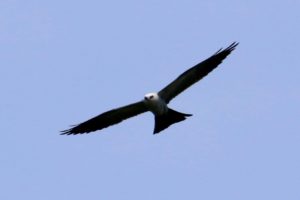
I met up with Donna again on June 16th as we looked for and found two adult Yellow-crowned Night Herons and a recently fledged juvenile near Cincinnati. From there it was off to Hillsboro to look for wild Northern Bobwhite. I had not seen or heard a bobwhite since the days of my youth, prior to the harsh winters of 1976 and 1977. Again, Donna located several bobwhite as soon as I arrived at that location. The best part was hearing the birds call out, “bobwhite.” I hadn’t heard the call of a bobwhite in more than 44 years, what a remarkable day!
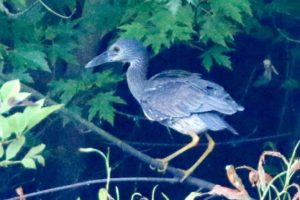
My last day trip for June was with Sarah as we chased a reported Brown Pelican in Port Clinton and then Metzger Marsh in the hopes of finding a Western Cattle Egret that Donna Kuhn had found two days earlier. We drove up to the last known location of the pelican and Sarah said “there is something out there on the lake”. I pulled off the road, hopped out and glassed the bird. Sarah’s gear was in my back seat and she didn’t have quick access. I simply said “Brown Pelican, got it, let’s go”. Sarah thought I was joking but scrambled to get her binoculars. That may have been the easiest rarity we got this year. The Brown Pelican was gone by the afternoon and we were almost the last to see it. We dipped on the Western Cattle Egret but I was able to add that Snowy Egret I missed on June 1st. I finished the month of June with 268 species of birds for Ohio which is twenty birds ahead of my 2019 Big Year total for the same time last year. Remember, I ended 2019 with 298 species for the state so reaching 300 species for this year is an even greater possibility.
Sarah
June was uneventful as far as the Lake County competition goes as no year birds were added overall. I didn’t miss any birds the last weekend in May while I was birding with my parents in Toledo and the Ohio governor relaxed the stay-at-home orders so it was a good time to go on some out-of-county birding adventures.
On my way home from Toledo on June 1st, I stopped in a neighborhood in Euclid to look for the pair of White-winged Doves that had been reported. I walked and drove around several blocks before finally hearing the distinct ‘who-cooks-for-you’ cooing. By then it was almost dinner time, so that had to be good enough.
On June 13th, Adam, Jim, and I went to Killbuck Marsh Wildlife Area to try for the King Rail which had been showing well all week. After we crossed the bridge, we heard it calling nearby. Adam spotted it moving at the edge of some water and soon it was out in the open. It ran along the water’s edge and right across the gravel path. Afterwards, it stayed just inside the vegetation, but visible enough for me to get a video of it calling. We couldn’t have asked for better views and I was super happy because this had previously been a heard-only bird for me.
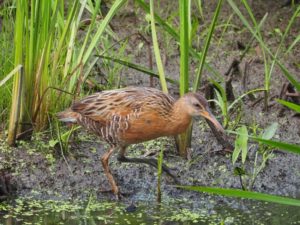
Red-breasted Nuthatches are scarce this year, so on June 16th I was looking for one in neighboring Geauga County when I saw a report of Franklin’s and Laughing Gulls at the beach at Mosquito Lake State Park. I was 45 minutes away, so off I went. I’d never been there before, so I was following directions to the pinned location for the eBird hotspot. When I arrived at the park, my phone said to go left, but the sign said the beach was to the right. I went right and arrived in a large parking lot next to a narrow strip of sand that I guess was the beach. I was about to leave and go where my phone directed me when I noticed a man in a minivan looking at the water’s edge. Among a small flock of gulls were the Franklin’s and Laughing Gulls! The Franklin’s was a lifer and to see the two side by side was a great learning and photo opportunity.
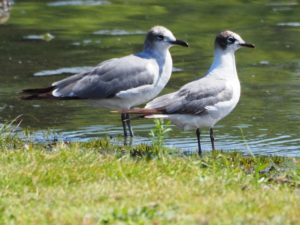
That week Adam and I discussed visiting family near Cincinnati for the weekend but postponed until 4th of July weekend. After Jim had great birds in southern Ohio, I drove down there on Thursday to bird with my parents for a couple days. The plan was to meet them at Gilmore, but several things delayed me, including not being able to find the entrance closest to the area where the Yellow-crowned Night Herons were seen. I missed them by 10 minutes! My mom showed me the awesome picture she took of the two adults. My dad and I waited for them to return while my mom picked up Skyline for lunch. We didn’t see them until dusk when my dad and I returned after dinner and caught a brief glimpse of three adult Yellow-crowned Night Herons flying over the rookery area. In between visits to Gilmore, we went to nearby Voice of America Park to get the heard-but-rarely-seen Bell’s Vireo, an Ohio lifer for me.
My dad hatched an ambitious plan for Friday, to go for the Northern Bobwhites and Upland Sandpiper in Highland County and from there to go look for the nesting Mississippi Kites in Chillicothe. I’d never been to either place, but Jim had wonderful advice. Shortly after we arrived at the Old Highland Stone Gravel Pits, we heard several quail calling, but we also ran into some trouble. The landowner did not appreciate birders coming and said they were trespassing. He softened when I said we were from out of town and allowed us to park in a pull-off, but we didn’t stay long after photographing a couple distant quail from the road and being followed by a state trooper who told another birder to ‘move along’. We dipped on the Upland Sandpiper.
The kites were a different story. We had the rest of the day to wait and look for them and it took that whole time. I’d seen Jim’s fantastic photos of them and pictured them flying close overhead or perched in the dead part of their favorite tree. Except for a brief trip to Junction Earthworks and Wendy’s, we camped out at the church the entire afternoon without seeing either one. Frustrated, I knew the nest was nearby, so I looked at pictures on eBird and deduced it was in a cottonwood. One eBirder pinned the nest location, so I mapped it with my phone and walked there finding a large cottonwood at those co-ordinates. I scoured the top of the tree and finally saw a stick nest with a black tail jutting out to the left. I showed the nest to my parents, took a couple documentation photos, and we headed back to their house.
On my way home from southern Ohio, I tried to stop for the Upland Sandpipers in Columbus, but the gates were locked.
The Mississippi Kite was 256 and the Brown Pelican was 257 for my Ohio 2020 list, which isn’t bad for someone who’s not supposed to be trying to reach 300 this year. At this point I might as well go for it as long as it doesn’t jeopardize my county big year.
Part 11 – July
Jim
Fall shorebird migration in Ohio starts the first day of July in my book, but according to the legendary Ray Hannikman, the magical day is July 4th. Sarah and I started hitting Headlands Beach State Park every day starting on July 1st. It was our thought that if we got there early every day and beat the crowds of beachgoers, we stood a greater chance of finding new birds for the year and the occasional rare shorebird.
Sarah and Adam were headed to Cincinnati on July 3rd to visit family for the 4th of July. Sarah told me, “I just know you are going to find something on the 4th of July without me”. I chuckled…what were the odds? On July 4th at 2:05 am I sent Sarah a message after reviewing her final draft of the May portion of the blog. I also told her to wish Jamie and I luck birding the beach that morning. Jamie and I have found all kinds of rarities birding together and this year we are almost unstoppable, so I was being a little sarcastic.
I meet Jamie at Headlands Beach at 7:00 am on July 4th and we headed directly to the water’s edge of Lake Erie. As we arrive there, I yell out, “AVOCET!” Jamie says, “No way, where?” Sixty feet to the west of us is an American Avocet in breeding plumage. I take some pics and hear my phone ding and I tell Jamie we need to put this sighting out. I check my phone and it’s a message from Sarah saying, “Good Luck!” with a winking face emoji. I start to laugh and immediately respond to her message with, “We just got an Avocet, not joking.” Sarah’s response is typical, “I knew it! Flyby or land?” You see, “flyby or land” was the important part of her message, because if it was a flyby, there was a high probability no one else would get the Avocet and her lead would only be cut by me, her third place foe. I message back, “Land. Pics coming.” Sarah messages, “Aw man! I told you the 4th of July. Damn it!” I feel bad for her for about 30 seconds. I send her the most beautiful photograph of the avocet with a laughing crying emoji and say, “Should have taken me to Cincinnati.” Sarah messages back, “Fly far, my little friend.” With the avocet I moved into third place, just one bird behind Erin and two birds behind Sarah. Andy dropped to 4th place as neither he, nor Erin, arrived in time to get the bird before it flew off. July 4th was one hell of a day for several birders that made it to the beach in time to see the Avocet. Ray was correct, July 4th was the magical day.
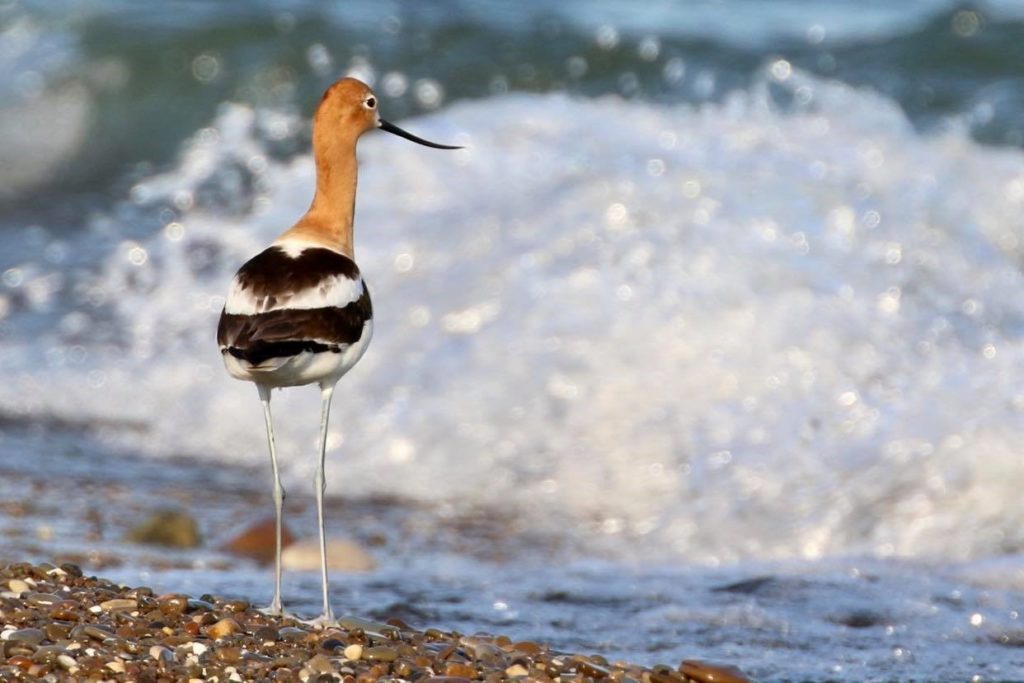
July 10th rolls around and Sarah and I are birding Headlands Beach, like we do every morning, when I glass a Willet among the gulls. All the big year birders already have this bird, but it’s still an uncommon sight. As I’m pointing this out to Sarah, she starts mumbling and hitting my shoulder. I don’t know exactly what she said, but she was excited and then I start shouting, “Where, where, where?” Whatever it was I wanted to get on the bird before it flew off. Three of the top four birders have this bird, but I do not. As a matter of fact, this rare bird is a lifer for me. With this bird I tie Erin for second place and I’m now only one bird behind Sarah. This mystery bird will be revealed in Sarah’s half of the blog. Sarah did tell me she was hoping the bird would turn out to be a Whimbrel as everyone still needed that one.
July 13th, Sarah and I are birding Headlands, like we always do. I told Sarah that we were going to get Sanderlings today. Sanderlings are not a rarity here, but no one had a Sanderling yet this year. It’s also early for Sanderlings to show up, but I was hoping. We are walking east along the lake’s edge into the sun, when I see some birds running into the surf. Bingo, Sanderlings in “breeding plumage”, and that plumage is a rare sight on the north coast. We put a message out to the Lake County birders, but only a few people arrive in time. Erin and Andy don’t make it to the beach. I now move into second place all by myself and only one bird behind Sarah. This lead won’t last, but second place was nice while it lasted. Today is July 30th and it’s been slow for shorebirds these past couple of weeks, but August is supposed to have the biggest wave of migrating shorebirds through Ohio for fall. Guess who is going on vacation to the Smoky Mountains through August 8th? Yup, you guessed it, Sarah and Adam!
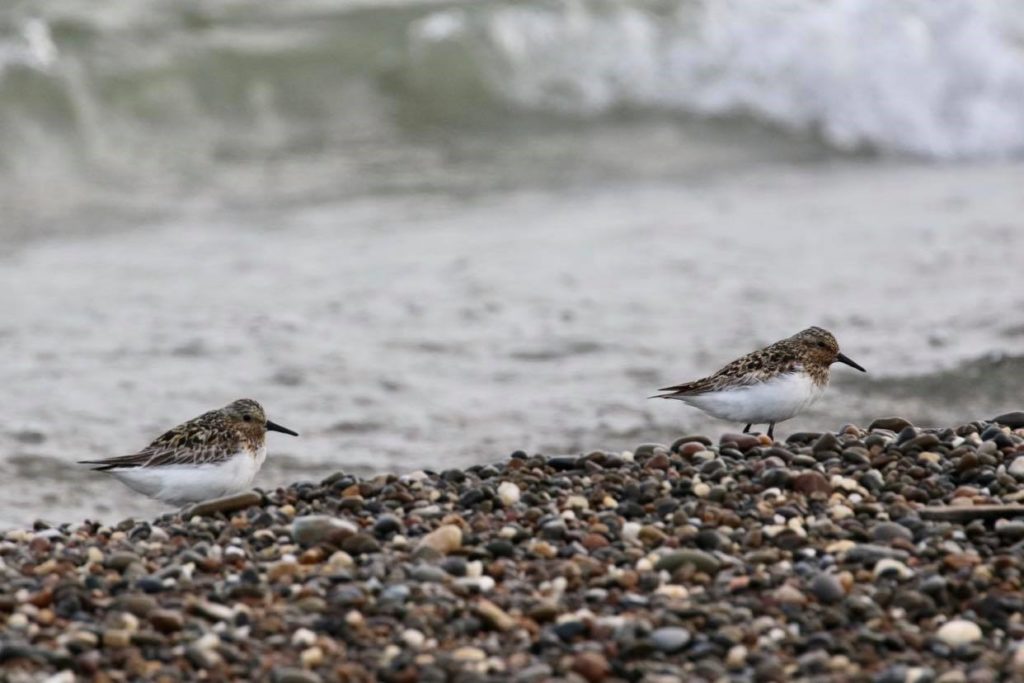
Sarah
Shorebird season is nerve-wracking. A bird or a flock can fly by in an instant and if you’re not there, forget it. People complain about never seeing any birds at the beach, but it’s because you have to be there every day – or apparently be there the day I’m not.
Missing the 4th of July avocet was quite the low point, although I enjoyed birding again with my parents while I was away. Exactly one week later, another avocet was reported on the beach in the afternoon by the mysterious ‘Anonymous eBirder’, but I didn’t know until it was almost dusk, and the bird had flown. The next week, I had been thinking, “What are the chances an avocet shows up three Saturdays in a row?” and also, “How many chances am I going to get at this bird?” Jim, Jamie and I walked the entire beach without a single shorebird. We were walking back along the bike path that paralleled the beach when, “Ding!” my phone went off and, “Ding!” Jim’s phone went off. I looked at my phone and Erin had messaged, “Avocet, headlands, flying west.” In a panic, I said, “Avocet!” and took off in a dead sprint back out onto the beach, looking wildly back and forth when I reached the shore. I had to get this bird – she reported it, that means she got it. For a second, I couldn’t figure out why Jim and Jamie didn’t also react. Oh, that’s right, they already have avocet. Another message from Erin, “A second one just flew by. I’m near the boardwalk. Both flew west.” I was west of her, I had a chance, but I didn’t see anything. By this time, Jim and Jamie were also looking. Suddenly, I heard a high-pitched, “Kweeep!” I looked up and there it was, winging its way back toward the east. Whew!
The most fantastic sighting of July was not a new bird for the year for me. On July 10th, Jim had just found a Willet on the beach among the gulls. While he was still looking at it, I started to scan, and my gaze landed on a large, brown shorebird. My heart leapt as I thought, “Whimbrel!” but the beak was upcurved and pink at the base. My mouth could not form the words to utter what my mind was trying to compute, so I started hitting Jim and said, “Pan right, pan to the right!” Oh, my Godwit…AGAIN! We’ve hardly had any Marbled Godwits in Lake County, let alone a chaseable one and this one hung out at the beach for half an hour while most of the Lake County birders took pictures of it.
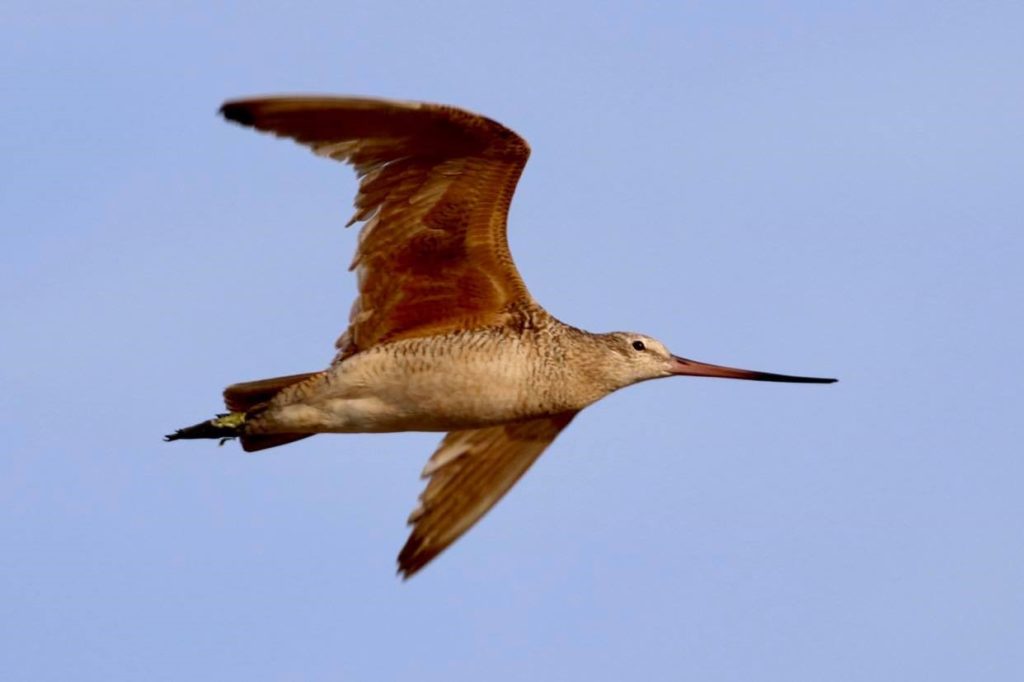
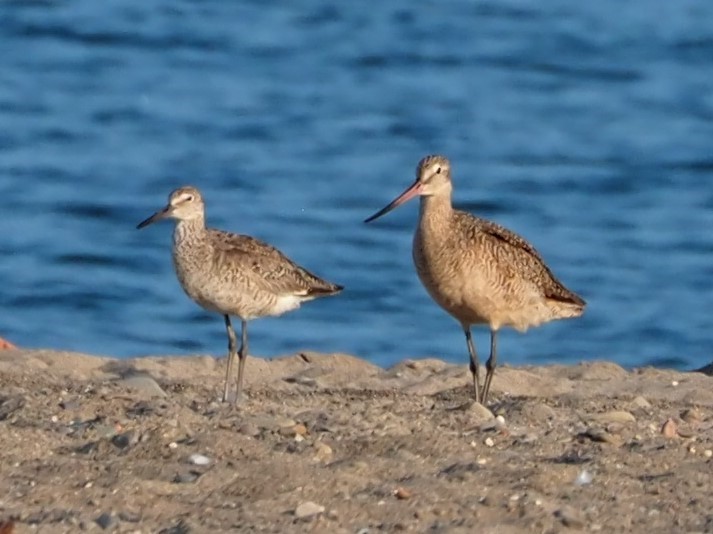
End of July totals:
Sarah: 236 (Lake County), 262 (Ohio)
Jim: 233 (Lake County), 273 (Ohio)
Part 12 – August
Jim
Here I sit at Sparky’s Place having just ordered a black bean burger and a pint. I bird the Conneaut Sandspit most days during fall shorebird migration and go here for lunch on their patio. I checked Ohio Chase Birds after placing my order and wouldn’t you know it, legends Rob and Sandy Harlan found a Sharp-tailed Sandpiper near Medina, an hour and forty-five minutes from Conneaut. I’m at 280 Ohio birds for the year and I should chase this, the fourth sighting of it ever in Ohio, but lunch is already on its way and I need to type this blog. The sandpiper will have to wait, and you will hear more about that bird in my next blog post. You see Conneaut Sandspit is in adjoining Ashtabula county, an hour from home and an hour drive back to our Lake County Big Year. There have been numerous times I’ve had to race back to get a rare bird in my county while visiting the Sandspit. So why do I keep going here? It’s simple; this is the best location in northeast Ohio to see shorebirds up close.
Back to August; it all started by chasing a bird at Headlands Beach State Park from, you guessed it, Conneaut Sandspit, but this time I had Sarah and Adam in the truck and we were to meet other Lake County Big Year Birders at Sparky’s Place after birding the spit. Things did not go as planned after a Buff-breasted Sandpiper showed up at Headlands. We all piled back in and off we went back to Lake County with no lunch or pints. So goes the Big Year Birder’s Life. Oh, and the Buff-breasted Sandpiper was seen by two before it disappeared. We could have stayed and ate lunch after all as the top 4 birders dipped on this bird.
On August 27th, I returned from Conneaut at normal speed having missed Cole DiFabio and Chia Ambystoma’s post about two Buff-breasted Sandpipers in Mentor Marsh. I was getting ready to get out of the truck at Temple, a local shorebird area along the highway, when I saw a message from Andy and Erin that they were on both birds and I was only five minutes away. The Avram’s were out birding before Andy’s grandmother’s funeral. They were running late because they stayed to get me on the bird and then off they ran, literally.
Sarah
On Thursdays this fall, I teach an in-person organic chemistry class 1 – 3 pm and it’s killing me to be out of the county. The Thursday that Cole and Chia found the Buff-breasted Sandpipers, I had an 11am in-person meeting with the president and vice-president of my college. Cole texted me about the birds as I walked into the meeting. I couldn’t get out to look until after work. Jamie and I looked earnestly with Jim’s help, but to no avail. This was the second time I’d missed this bird. How many more chances would I get?
Four days later, I got a text from Cole that Gautam Apte and his friends from Ohio State found an Upland Sandpiper at Fairport Nursery Road. I left immediately, driving like a maniac. I jumped out of my car yelling, “What are you guys doing finding birds in my county that I haven’t seen?” as the dust settled. “It’s actually a Buff-breasted Sandpiper.” “Even better! I haven’t seen that either!” …and some people already had so it would raise my total, but not theirs. The bird had been flying around across the street, flushed by large trucks coming and going. Jim arrived, coming in hot because he hadn’t gotten the memo about the corrected ID. The buffy flew up very briefly, but I missed it. Before I could stress too much, the sandpiper flushed again and flew around for about 30 seconds giving chances for photo ops, but neither of us got anything usable. And that was it. We never saw it again. Lake County birders, even some of the old timers that don’t get excited about much nowadays, began arriving until there was at least a dozen of us, but they ended up disappointed. The OSU birders couldn’t believe how many people had arrived in such a short time. “Welcome to Lake County! We know how to get the word out,” I told them. Whew! I can’t believe how lucky I was to get that bird!
Jim
What’s crazy is we’re lucky to get just one Buff-breasted in the county a year. That was not the last one we saw either, as Sarah and I observed another found by Caitlin Ambrose in early September. 2020 is turning out to be the craziest birding year ever.
On August 18th, Sarah, Caitlin, and I were birding Headlands Beach State Park and unbeknownst to Sarah and me, Caitlin had taken a photo of a Baird’s Sandpiper. She had misidentified it and posted it to Birding Ohio as a Semipalmated Sandpiper an hour or so after we left the beach. I’m birding the spit when Sarah sends me the photo and tells me the quiz bird is on the left. The photo is dark, but the bird appears to be a Least on the left and a Semipalmated Sandpiper on the right. Sarah tells me the bird I called the Least was almost as large as the Sanderling on the right. Bing-bing-bing alarms go off. I took a good look at it. It doesn’t look like a Western Sandpiper and I say so. Sarah thinks it’s a Baird’s Sandpiper. I tell her to send the photo to the legendary Ray Hannikman to see what he says and sure enough he also thinks it might be a Baird’s. Sarah heads back to Headlands Beach and I continue to bird the spit. I should have just turned around then and headed back to the county. Less than 40 minutes later, Sarah messages me, “Get back here now!” Damn! Off I race and make the 50-minute trip to Headlands in 43 minutes.
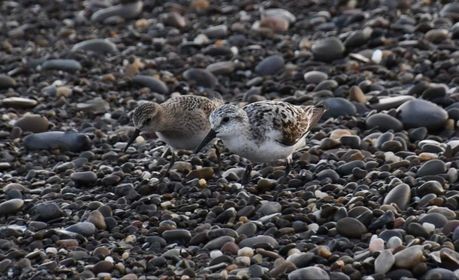
I get out at Headlands with Caitlin and others and get on what I think and am told was the bird, but it doesn’t seem right. These birds both look like Semipalmated Sandpipers. I take a bunch of photos, but I know neither of these birds are the Baird’s Sandpiper. I’ve had several Baird’s within the last year throughout Ohio. There was a lot of confusion and excitement on the beach so there was a high probability that the bird lost us. I went back to my truck as everyone departed and look over my shots and there was no Baird’s in any of my photos. So, I head back out on that mile-long beach and within an hour, find the REAL Baird’s Sandpiper with a Sanderling on one side and a Semipalmated Sandpiper on the other. The size difference was perfectly illustrated and as it walks within 10 feet of me, I can clearly see the wings extend beyond the rump and it looks like a big Least Sandpiper. I message Caitlin. She had already shown her pics to Andy, so she knows she was on the wrong bird as well. Caitlin takes the rest of the day off from work and comes back to the beach to re-locate the Baird’s. I hung out long enough to get her on the bird. This was almost a big miss for us. Before August is over though, we find several more Baird’s Sandpipers. In 2019, we only had one Baird’s and one Buff-breasted Sandpiper in Lake County. It’s an unbelievable year!
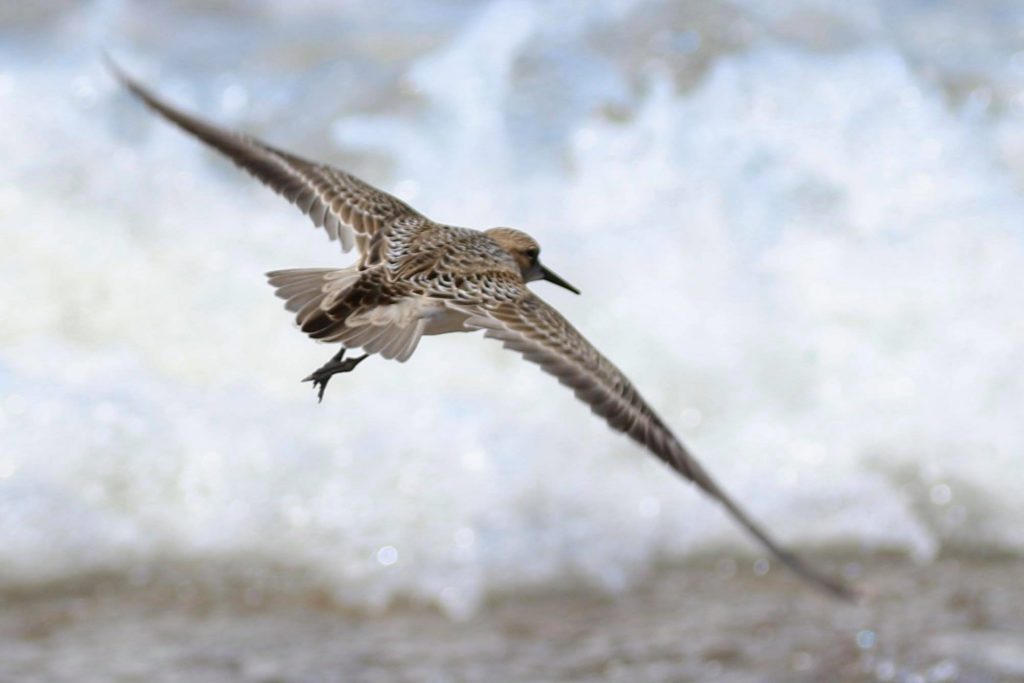
In the quest for the elusive “300”, Sarah and I found time to chase Ohio birds this summer, all within an hour and a half’s drive of Lake County. A couple of such chases were for a rare Western Sandpiper at Knox Lake and a Little Gull at Berlin Lake.
Sarah
On the evening of August 23rd, the Stark county Little Gull sighting was posted to Ohio Chase Birds. It would be a lifer for Jim, so we decided to do our regular early morning Lake County routine the next day and keep an eye out for updates. In the morning it was still showing well, so we went for it.
The location was well described by Kent Miller, but we still had trouble finding where to go down to the mudflat from the road until I remembered mention of a yellow plastic bag to mark the spot. The walk was a haul and it was warm. We worked our way to where we’d seen a group of gulls and I spotted it – a gull swimming in the water, so tiny it looked like a phalarope. The juvenile plumage was gorgeous! We wanted to get closer for photos. It was a tough slog sinking in the sticky mud, but it was worth it.

We were joined at Berlin Lake by Lucas Weaver, a young Amish man doing a big year by bicycle of the Bobolink Area. I didn’t realize it until later, but with the two year birds he got that day, he passed me in the Ohio 2020 competition. We would leapfrog each other for at least the next month.
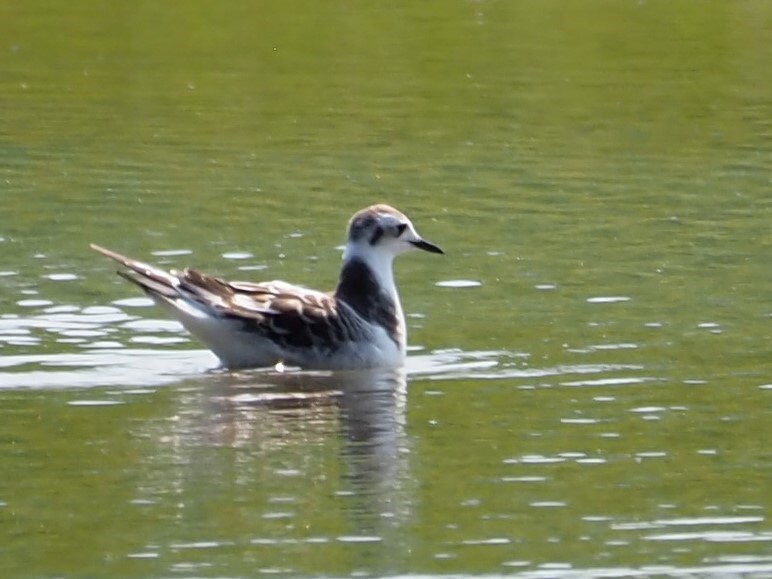
Jim wasn’t the only one to get a lifer in August. My parents took an anniversary trip to Toledo and I met them there for a day of birding. We met at Howard Marsh, hoping to get the Western Cattle Egret that was still evading me, but no luck. At 11am, I needed to log in to Zoom for an American Chemical Society meeting. We went to Maumee Bay State Park, so I could use the Wi-Fi at the lodge. Beforehand, we checked the beach and I saw two large, plain, gray sandpipers – Red Knots! They’d been reported by Paul Jacyk a few days earlier and I couldn’t believe they were still there. Lifers for all of us!
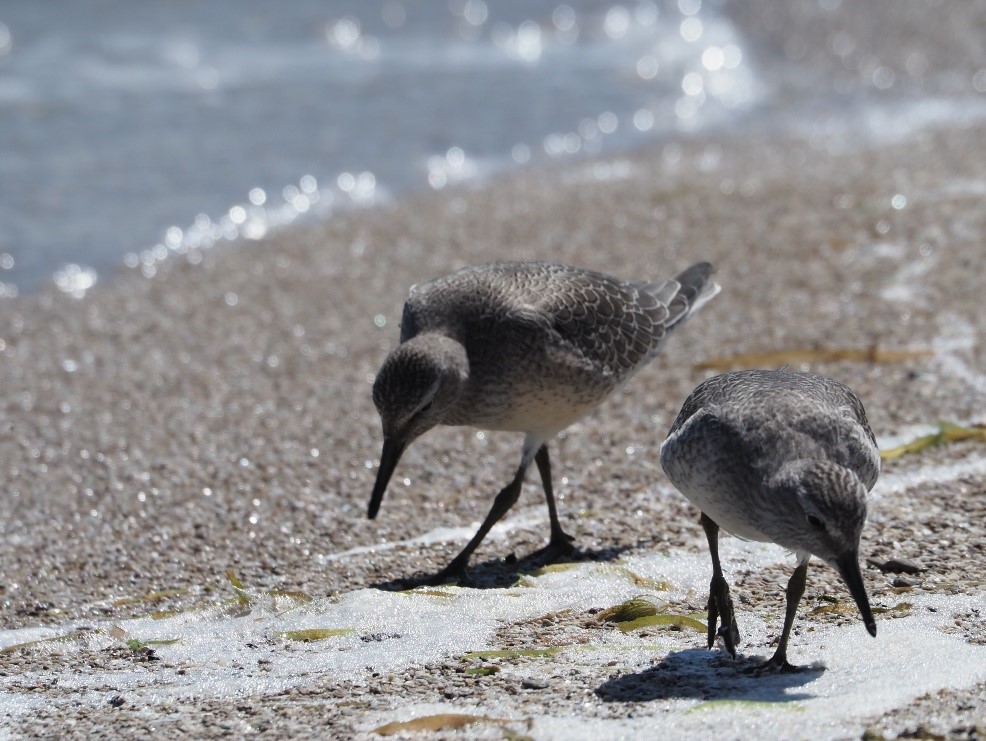
Jim
The best bird of the year came on August 26th. We received reports in the evening of August 25th that a first Ohio record of Brown Booby was found by Henry Trimpe at Nimisila Reservoir in Summit County, only an hour’s drive away. Sarah had to work but we squeezed in a trip before classes started. We arrived early and observed the Brown Booby for over an hour. It was like old home week seeing all the usual suspect birders and some new folks all trying to add another rarity to their Ohio Life Lists. The Booby hung around for ten days before its untimely demise as remains of a wing were discovered. What predator took this bird, how did this bird end up in Ohio in the first place, was it a wrong way migration or storm displacement? I guess we may never know.
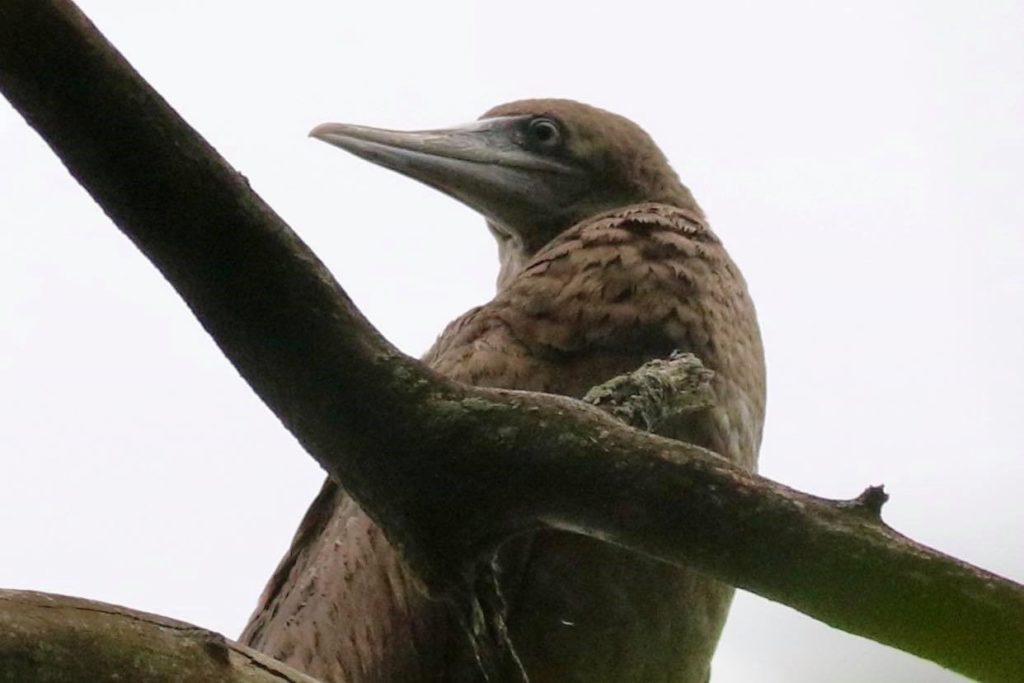
End of August totals:
Sarah: 239 (Lake County), 267 (Ohio)
Jim: 237 (Lake County), 276 (Ohio)
Part 13 – September
Sarah
From 4 pm on September 11th until 4 pm on the 12th, the annual Chagrin River Bird Quest was held. Usually this event had specific geographic limitations, but due to COVID it was “bird where you are” this year. Caitlin wanted to put a team together and so The Hangry Birders were born. The eight of us had a blast racking up 108 species over 24 hours and ended up winning the friendly competition by a landslide. We celebrated with dinner and beers on our deck, the only gathering we’d had at our house in months.
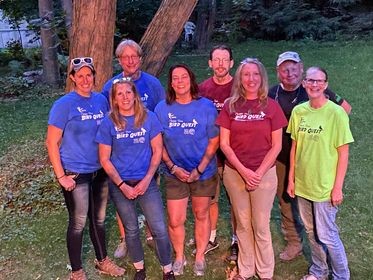
The most exciting moment of the quest occurred while we were scoping the marsh. We saw a stout, plain gray shorebird facing us. It was distant and not moving. We compared it to the Lesser Yellowlegs next to it and it was much shorter with a robust body. Was the bill straight? It was hard to tell. Could it be? We took some distant shots and sent them to Jerry and Cole. It was enough to convince Jerry to head out to see for himself, so Jim sent the following message to the group, “Red Knot Headlands.”
The Avrams were on the scene shortly. We showed Andy the bird in the scope, eager for his opinion. “Did you see it?” “I saw a sandpiper,” was all he said. We were still debating and staring at it in the scopes when…it stood up. “Lesser Yellowlegs!” Caitlin and I, who were looking in our scopes, exclaimed at the same time. It was kind of hilarious, but we were also pretty embarrassed. Jim had to send out a retraction message, “It’s not a Knot.”
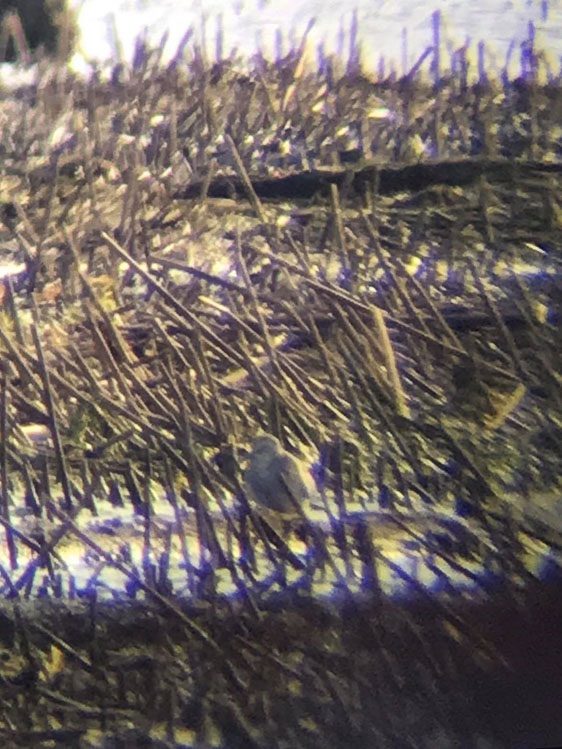
Jim
It’s September 24th and we are finally catching this blog up in real time. I bet you want to hear what happened with the Sharp-tailed Sandpiper, and I will get to that shortly, but first let me catch you up with what happened in early September. I had just arrived at the Conneaut Sandspit when Sarah messaged me that Gus Lanese had found a Golden-winged Warbler in Headlands Dunes State Nature Preserve. I didn’t even get out of the truck, just turned it around. I hadn’t seen a Golden-winged in over 20-some years; I wanted and needed this bird.
I arrived just before Sarah, who was coming from Ursuline College. The Avrams had already gotten brief looks at the bird but were trying to re-find it because of the possibility it could be a hybrid. Sarah and Erin were now tied and I was tied with Andy for third place. We did not re-locate the Golden-wing that evening and were hoping it would hang around even though winds were coming out of the north that night, making continued migration a more likely occurrence.
The next morning Sarah and I hit the beach as usual looking for Whimbrels and then we worked our way down to the dunes. No luck on the Whimbrel or the Golden-wing so we headed down to the magic dumpster area behind the park maintenance building. Sarah and I had little luck here but, as we got ready to leave, Sarah received a text that the Golden-winged Warbler had been re-found. Here we go chasing that bird again. Caitlin had found the bird and was trying to relocate it when we arrived. This bird was secretive and rarely came out of the grape tangles. Sarah was the first to get a good look at the bird and I was afraid it would disappear again before I saw it. Sarah tried to get pics, but it was near impossible and she had to leave for a doctor’s appointment. I stayed behind trying to see the bird better as I didn’t know when I would see one again. An hour after Sarah left, I finally got several good looks and a real rubbish head shot pic for the eBird checklist. I sent Andy a pic of the headshot I took of the Golden-winged and he responded in a text “Redemption. And I’m back one behind again!” Sarah and I both got lucky getting that bird.
Well, back to the Sharp-tailed Sandpiper on September 9th. I finished my burger, drove the hour and forty-five minutes, and got to the spot only to find out the Sharp-tailed had flown out of the flooded field to a farmhouse a quarter mile away and hadn’t been relocated! As I watched the field, I located Horned Larks, Pectoral and Least Sandpipers as well as about 200 Killdeer. I noticed the Killdeer were returning to the flooded area a few birds at a time and decided to move closer to that area. There were at least 15 birders along the road looking at the farmhouse so I broke from the crowd and walked down the road to the flooded area. Within ten minutes, the sandpiper flew right in and I got great looks and some awesome pics. This bird has only been seen in Ohio four times: 1984, 1990, 2019, and today 2020. This is a great score for a Big Year anywhere. Sarah messaged me and asked if I got the bird and I sent the pic below:
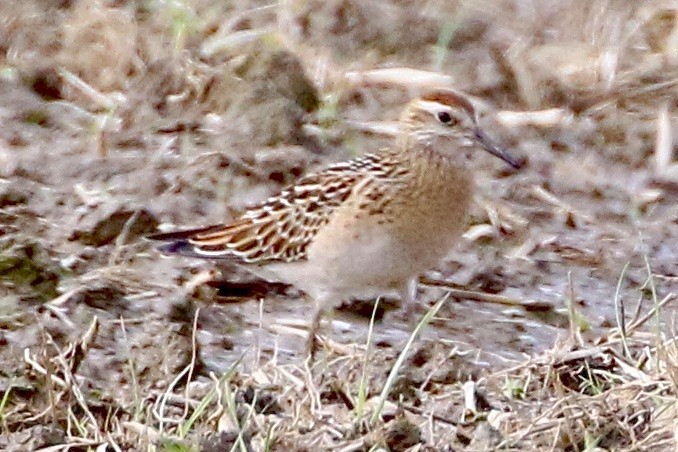
On September 12th, a Wilson’s Phalarope was found by Debbie and Mark Raven. Sarah and I chased it the next day. It’s an hour from my home, in Lorain County, just west of Cleveland, which is our friend, Janice Soos Farral’s birding domain. The phalarope was supposed to be in a field with standing water, across the street from a golf course. We arrive and I pull off the road and Sarah jumps out of the truck and I hear her yell. She’s landed in a roadside ditch full of water and I can only sheepishly say, “Oops sorry about that.” Within a minute, Sarah and I both find the bird at the same time and snap some good pics, clearly our easiest chase of the year. That phalarope was my 282nd state bird of the year.
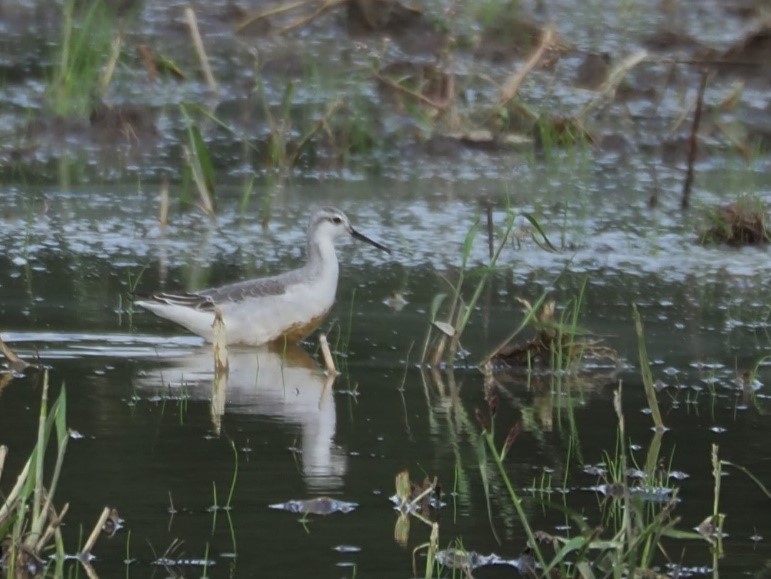
Now its September 15th and Sarah and I walk Headlands Beach as usual and only find Sanderlings. After looking at warblers in the dunes, we run into Ray and his crew and find that they just had two Grey (Black-bellied) Plovers sitting on the beach and six American Golden Plovers flying east. Sarah and I check the far east end of the beach hoping they’ve landed, but no luck. We needed those golden plovers for the year. What a big miss! Sarah and I head to the west end of the beach to try to at least see the Grey (Black-bellied) Plovers as we had seen one, at a distance, in the spring, and this would be our consolation prize. We are truly moping, and I point my finger at myself saying, “This is the look of the agony of defeat.” Then Sarah hears it. “You hear that?” she asks. The call is the unmistakable, ‘quiquiquiqui’ with no change in pitch. I’ll let Sarah take it from here.
Sarah
“It’s a Whimbrel, I swear it’s a Whimbrel!” I exclaimed excitedly. This was what we had been walking the beach every morning at dawn for – this right-place-at-the-right-time chance flyby that we had both missed in August. This was our BIRD! “It’s coming, look for it!” And then I saw it, the large, plain brown bird with the unmistakable down-curved bill, still calling. The Whimbrel whizzed by just like I had been saying and imagining it would. We started shooting, cameras always at the ready. Jim was tickled that he got a shot of the bird mid-call with its bill open. Just like that, within minutes we went from moping to joyous. We celebrated with elbow high fives.
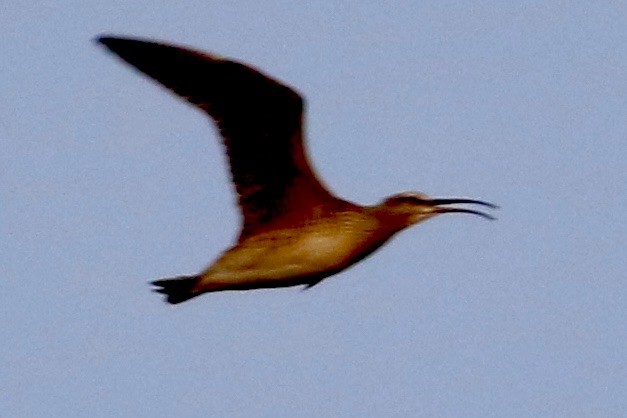
We ran into Gary, who manages the state park, as we were walking off the beach. We were regaling him with our tales of the Whimbrel and the phalarope, when we heard a faint, “Ko-Wee!” “plover!” The shorebird was coming in straight for us, but then turned back out toward the lake. “No black armpits!” I declared. I was able to get two documentation shots that prove it was indeed an American Golden Plover. Just like that we added two more birds! Of course, we’d see several more American Golden Plovers, including a cooperative one on the beach a few days later, but you never know.
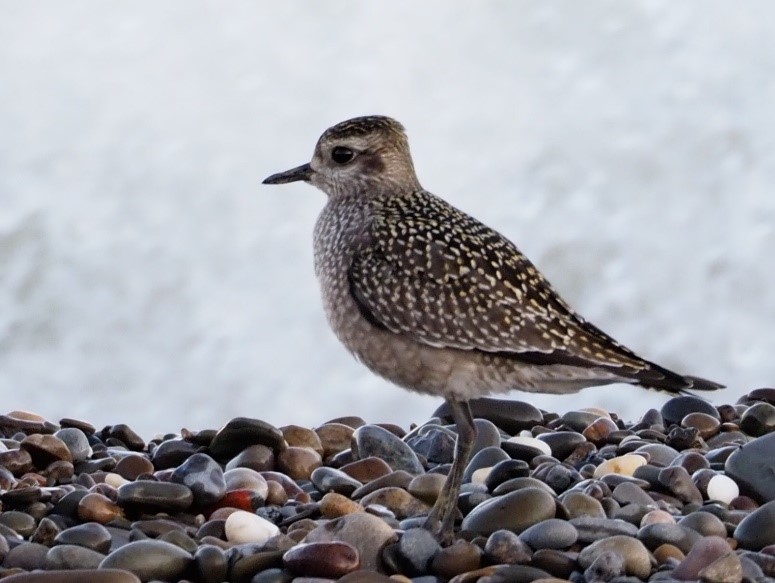
End of September totals:
Sarah: 243 (Lake County), 274 (Ohio)
Jim: 241 (Lake County), 284 (Ohio)
Part 14 – October
Sarah
The month started out with a long chase where Adam drove the three of us to southwest Ohio on Saturday, October 3rd to try for the Parasitic Jaeger my parents had seen a few times plus a Hudsonian Godwit on the way.
When we first got to Deer Creek Wildlife Area we were dismayed to see hunters in the parking lot about to leave. We didn’t let that stop us and put on the most brightly colored hats and hoodies we had. We walked the mile out to the pond and more disappointment, no waterfowl to be seen. We should have known. But suddenly, a group of shorebirds that had been tucked out of sight in a corner not 20 feet away came flying out and circled the pond. I saw a distinct black and white pattern and my mind first thought avocet, but then realized, “That’s it!” I’d never seen a Hudsonian Godwit and it was much smaller than I expected.
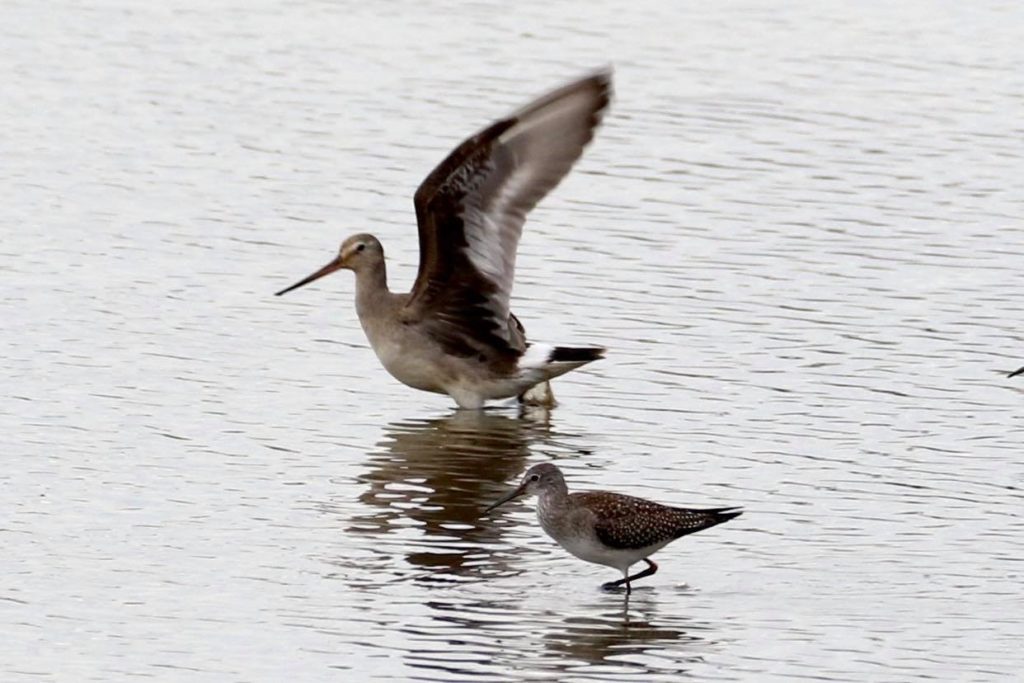
We met my parents at Caesar Creek State Park and they and a few other birders helped us find the Parasitic Jaeger, which was nothing more than a tiny gray dot on the water. It was a terrible look, but I’ll take the tick.
We had an al fresco lunch with my parents and afterwards they followed us back to Deer Creek Wildlife Area. We ran into Ohio big year birder, Donna Kuhn who was leaving after seeing the godwit, but by the time we hiked out to the pond the godwit had inexplicably disappeared, never to be seen again.
Jim
Sarah and I have been chasing the yellow or orange sparrows, as they are so often affectionately called, for the entire month of October. Every year, except this year, both the LeConte’s and the Nelson’s Sparrows could be found along the boardwalk at Wake Robin Trail in the fall of the year. We had been checking this trail twice a day but no luck. Well it was now afternoon and I was back for a second look on the trail and I noticed that Sarah had arrived there and as I approached the trail I saw her talking to Jerry Talkington. Jerry has seen those sparrows on the trail every year and he was going out there looking today as well. I couldn’t believe our luck and if we were going to get these birds, today was the day and Jerry was the guy. Jerry spent a couple hours with us and neither species materialized. Jerry went on to tell us this is the first year he can remember not getting those sparrows. It may not be as bad as it seems. The marsh has changed so much in the last five years from Phragmites and limited habitat to abundant habitat. The sparrows are still coming through but they are no longer limited to little strips of habitat where we could easily find them. Now those few birds have hundreds of acres in which to feed and hide.
We may not have gotten those sparrows, but man did we have fun spending time with Jerry and listening to him talk birds. Ray Hannikman is the legend here but Jerry goes way beyond that and is a character like no other. Sarah calls Jerry the “Guru” and I must concur. Jerry shares his insight and experience constantly while you are with him. Jerry has had great influence on the birders of the Cleveland Region including but not limited to these talented folks: Jen Brumfiled, Cole DeFabio, Chia Chiappone, the Avrams, Sarah and I to name a few. Most birders in the state know of or have heard of Jerry Talkington. Jerry doesn’t eBird but posts some of his bird photos on his Facebook page. He gets more birds every year than any other birder in the county as well as great pics of the rarities that are also often found by him. If there is an Ohio-first bird sighting I usually find Jerry and company there before I arrive. This year it was the Brown Booby and Jerry and Irene Krise were there before us and let us immediately get the bird through their scope. That made it easier for us to take our time and get great pics, which we did. I’ve birded with a lot of talented folks, but Jerry takes the cake.
On October 8th Sarah got a Pine Siskin while I was just finishing up at Cleveland Lights Out where I lead on Thursday mornings from 0500 to 0800. Just as I’m about three minutes out from Headlands Dunes State Nature Preserve I message that to Sarah, she tells me when the message arrived that’s when all the siskins took flight and immediately flew out of sight. Sarah meets me as I arrive, and we try to relocate her flock of over twenty Pine Siskins, but to no avail. I bird the next morning with Sarah before she has to leave for work. I then run into Caitlin and bird with her a bit and we discuss Pine Siskins and their definitive call. Caitlin is unfamiliar with rising call, so I play it on my phone. Less than two minutes later we hear that call and we immediately look at each other…bam! Now Caitlin is very familiar with that call and I bag Lake County Bird #242. In the next few days these birds show up at several locations we are birding. The year before I never saw or heard a Pine Siskin and as of this writing they are in flocks all over. Looks like finches are going to be big this year with possibilities of Redpolls, Evening Grosbeaks, both crossbills and who knows, maybe even a freak Pine Grosbeak.
Well on October 14th I receive a tip from Jerry about a Short-eared Owl sighting along St Rt 535 in the tall grass fields in Fairport but can’t locate it. On October 15th I go looking for the Short-eared again. I cheat a little and pull a Jerry and play an alarm call just as it’s getting dark and low and behold the owl flies directly over my windshield. This is bird #243 for Lake County and Ohio bird #288. This was also the first eBird recorded Short-eared Owl of the fall for all of Ohio. I posted this bird to our messaging app and within the next 36 hours every one in the group was able to find the owl, actually seven Short-eared Owls were seen at one time there by the Avrams.
Little did I know that would be the last county or state bird I would get for at least the next ten days. As I write this I’ve been in quarantine for six days now. I still work a day a week as a first responder and my housemate and numerous friends are also first responders. I got a call from my housemate, Brian, that a shift partner he worked with all weekend had come down with COVID-19. Brian went on to tell me that his sergeant had just tested positive and Brian was headed to get tested. The next day Brian finds out that he too tested positive for the virus. I received a call from the Ohio Department of Health that I needed to quarantine from October 16th through to Sunday October 25th. I even went to get tested but since I had no symptoms they would not test me. Just before I knew I was going to get quarantined I brought my 18-foot camper home and parked it in the driveway. So here I sit at my camper dinette typing this blog from our driveway. I still have no symptoms and my younger housemate is recovering. The tough part is a Saw-whet Owl, a Cackling Goose and a Nelson’s Sparrow have shown up in Lake County in the past few days and I can’t chase them yet. I also need the Saw-whet and Nelson’s Sparrow for my state list this year as well. I went from a solid second place to now being tied for 3rd place. My main concern is not contracting the virus and having the chance to get out and bird again soon. You can make up for lost time but only if you are still around to do so. I will catch up but first things first. I have just four days left in quarantine and have my fingers crossed. Those birds are really the least of my worries right now. Stand by for our next blog as I have no clue what will have happened by then. The race is really coming down to the wire.
Sarah
The entire time Jim was quarantined I didn’t add a single new Lake county year bird although I did go get an Eared Grebe in Lorain county. It was the biggest low of the year; I missed three species and was getting frustrated looking for the orange sparrows. Standing around staring at cattails by myself was especially boring. We joked that our bird mojo only worked when we were together. It was remarkable how many birds we found or successfully chased together.
On Saturday morning, October 24th, I didn’t find anything new and had just gotten home for lunch and taken my coat and boots off when young Josh Davidson sent a message to the group that he’d found a Cattle Egret in the Mentor Marsh. This was huge since there’s only a handful of records in Lake County. Lunch would have to wait. I put my gear back on and flew over to the Wake Robin Trail. When I arrived Josh and the entire Avram family were there. They gave me thumbs up and pointed at a small, white egret out in the marsh. To save time, I hadn’t gotten my scope or camera out of my car. I went to get them and missed the egret flying around, but it flew again and landed close for great pictures.
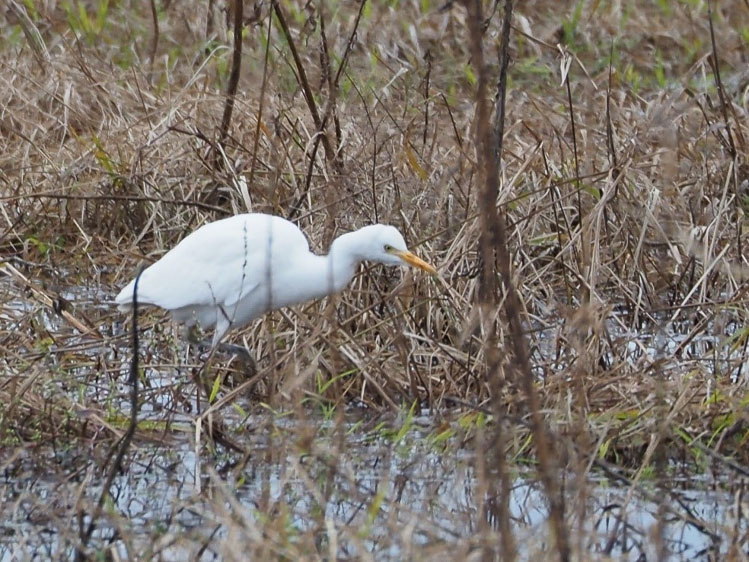
Jim was in the area taking his camper back to storage since his roommate had recovered and he could move back into the house. He asked if there was a vantage point to see the egret away from people. I suggested a nearby overlook and he arrived in time to see the egret when it flew the second time. It was a good thing he came because it was a one-day wonder.
After lunch, Adam and I went to do some lake watching in hopes of seeing Black Scoters. We weren’t even there a half hour when I got a message from Jim that he’d found the Cackling Goose in the Mentor Cemetery that I’d been searching for all week. Jim stayed to point it out among the headstones and 200 Canada Geese.
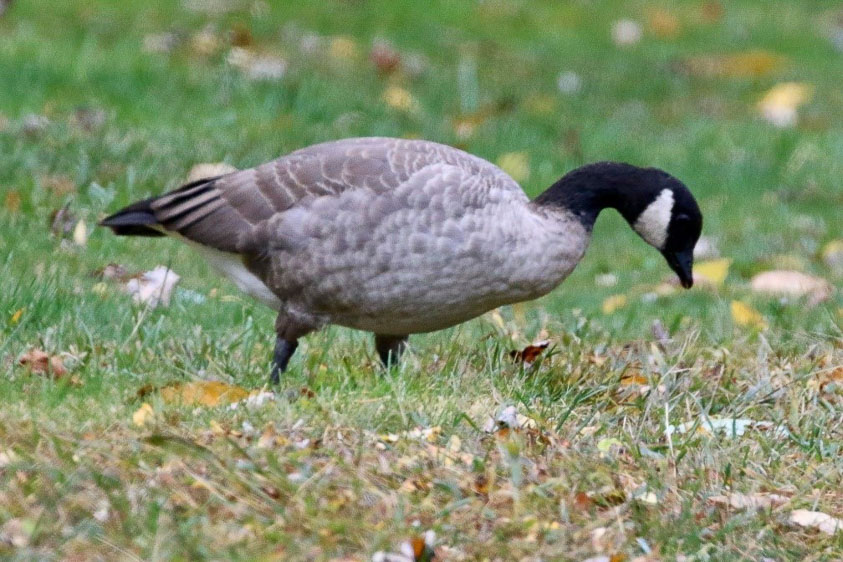
The next day Adam and I met Caitlin and Kari at Lake Erie Bluffs to lake watch from the tower. It was windy and chilly, but we spent two hours up there and were rewarded with a good number of Black Scoters and a couple White-winged Scoters.
Jim
On October 26th, I was released from quarantine but not before losing my taste and smell. Did I have it? If I did, it was a mild case. That morning I was birding with Sarah. The second place we hit was Wake Robin Trail. No sooner did we hit the boardwalk into the marsh that we were flagged down by Mike Stockton at the terminus of the boardwalk. He acted excited, so I was pretty sure he just had a rail and boy was I wrong. As soon as we approached we immediately had great views of a very late LeConte’s Sparrow. Sarah and I were the last of the top five county big year birders to get that bird so we both moved up a notch on the leaderboard. What a way to come out of quarantine!
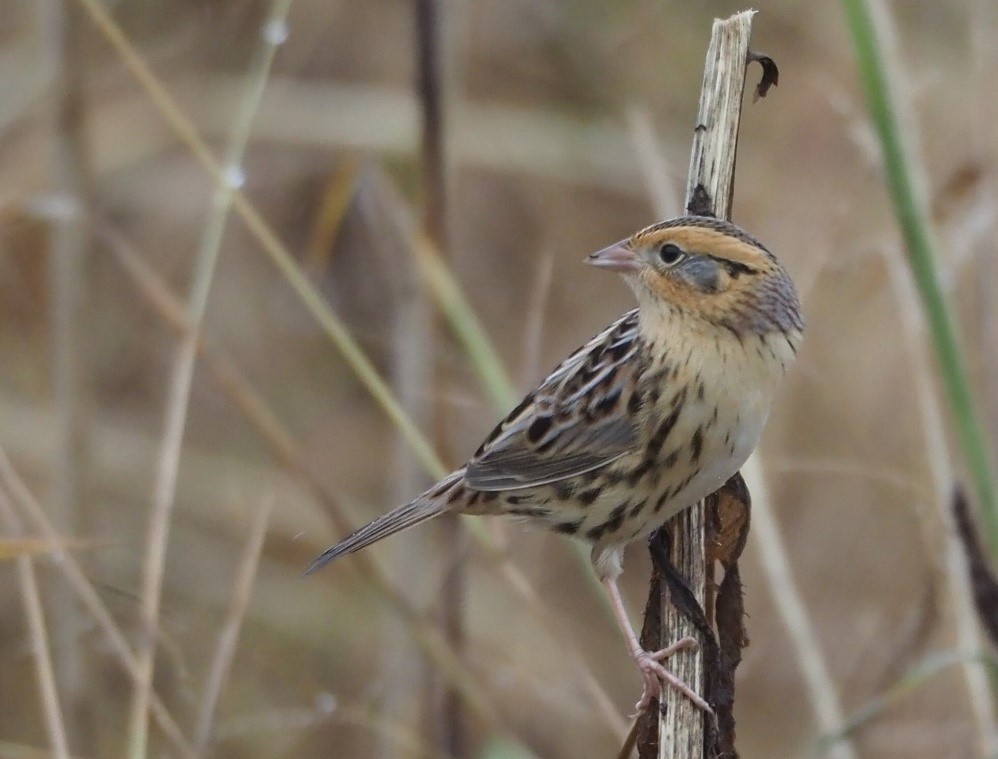
On Wednesday October 28th, I went out birding the lakefront after Sarah headed to work. As I was surveying the birds in the harbor at Fairport I spied a low flying duck landing along the far breakwall. I didn’t have my scope with me, so I had to run back to the truck as I am hoping it might be the last scoter still needed for the county. Sure enough it was the first Surf Scoter for the year. Upon scanning the harbor more intently I found a second Surf Scoter. I posted the find to our group and all the top birders were able to get it except for Sarah. She texted me she would be looking as soon as she was free from the college. I was birding Wake Robin when Sarah texted me she was free, so I headed to the harbor to help her find the bird. I arrived before her and found the scoter with my scope. I advised Sarah that I was on it and would stay with it until she arrived. A few minutes later I see Sarah arrive and bail from her car hightailing it. BOOM!!! She looks through the scope and bingo she maintained her spot on the leaderboard. That was also the last Surf Scoter seen in Lake County to date.
Now it’s the end of October. October the 31st to be exact and Halloween. Sarah, Adam and I birded Painesville Township Park lake watching, then Headlands State Park beach before breaking for lunch at their place for chicken chili. Adam is one hell of a cook. Afterwards I was just planning to go home to nap before Sarah talked me into chasing a Red Phalarope at Rocky River Park on Cleveland’s west side. I’m sure glad she did. It was a 40-minute drive for a possible lifer and the trifecta of the phalaropes for 2020. We arrive and immediately run into Andy and Erin Avram who just added the bird to their state list for the year, but it was also a lifer for Erin, Sarah and me. We immediately got good looks and went closer for some outstanding pics. Now that’s the way to end October and quarantine in 2020.
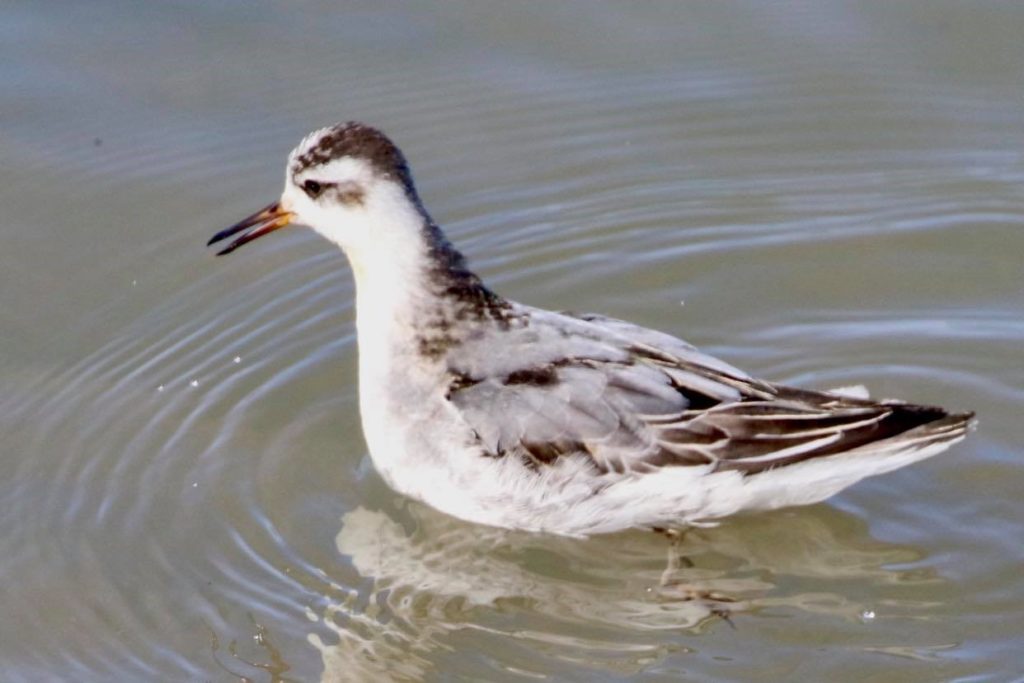
End of October totals:
Sarah: 250 (Lake), 286 (Ohio)
Jim: 248 (Lake), 294 (Ohio)
Part 15 – November
Sarah
November started out terribly. A gale warning was in effect and a huge storm system was supposed to come through in the early morning. It was Sunday, so Jim had ranger duty and I didn’t think anyone else was crazy enough to go birding in that weather, so Adam and I decided to sleep in a little and head out around 9am, after the storm should have passed. Big mistake! Just as we were about to leave, I got a message that the Avrams had a Sabine’s Gull fly by them at Painesville Township Park heading west. I was so upset. That gull would be a lifer for me. A follow-up message saying Ray and Dave also saw the gull, this time at the Fairport Harbor boat ramp, gave me a bit of hope so we rushed there, although not as quickly as I’d liked, since Adam was driving. For the next few hours many people picked through the thousands of Bonaparte’s Gulls in the harbor, but to no avail. I never wanted to cry over missing a bird quite as much as this one. It had been an adult and I could imagine how beautiful it was and thought I’d never get another chance to see one unless we went to the arctic.
Missing that gull really lit a fire under us. Jim and I vowed we would not sleep in until the year was over. We would take our post somewhere along Lake Erie each morning at dawn and watch, sometimes all morning. That’s how most of November went. It was cold and miserable, but it paid off the very next day, when a Red-throated Loon flew directly overhead. The entire year could come down to flybys for whoever was in the right place at the right time.
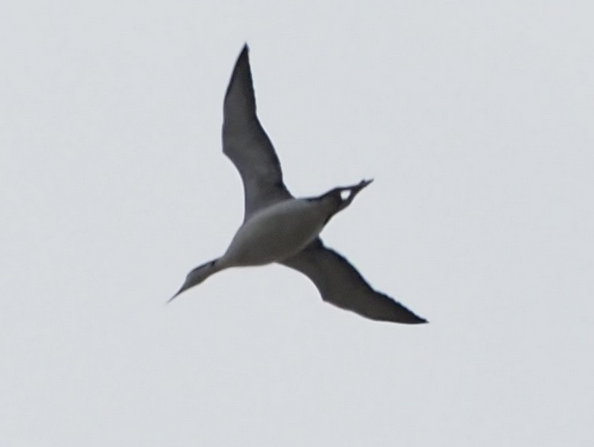
Jim
October ended in epic fashion. November started off a little slower but quickly got out of hand. I was birding Lakeshore Reservation on November 3rd when word went out that Joan Scharf had seen and photographed Common Redpolls earlier that morning at Lake Erie Bluffs. I finished birding Lakeshore Reservation when Dave Chase reported finding two Common Redpolls. I immediately headed to the Bluffs and, with a little help from Dave, was able to locate and photograph them. It was the winter of 1995, when I lived at Chapin Forest Reservation, that I last had good looks at a Common Redpoll. Sarah came out after teaching that day, but I was unable to find any. We started out early the next day and Sarah found them in the exact same location at the Bluffs, before I even arrived. What a great bird, any year.
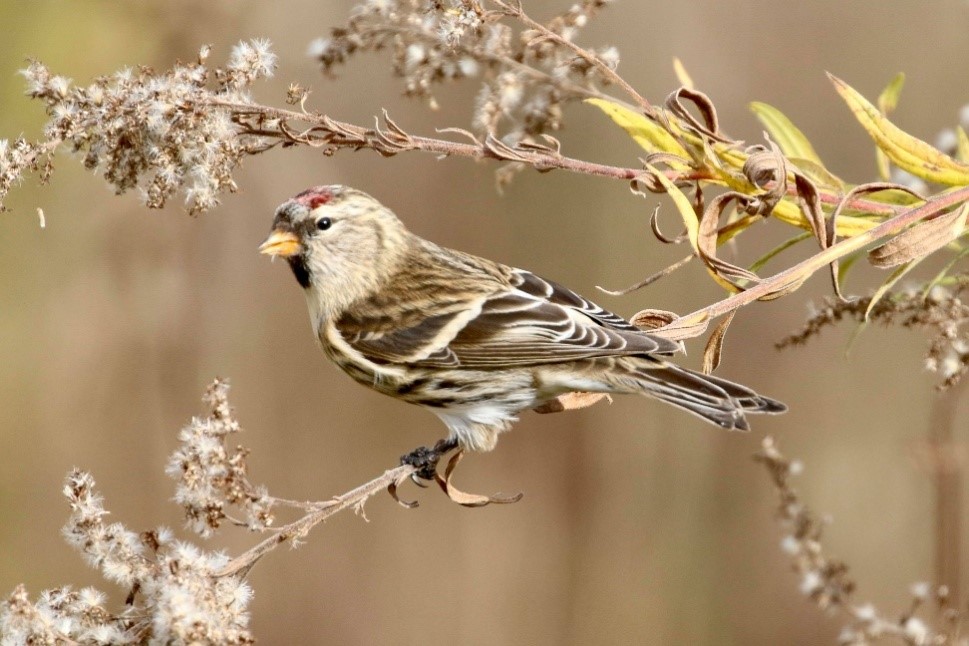
Sarah
After finding the Common Redpolls and witnessing a remarkable morning flight with hundreds of goldfinches and siskins, we decided to go to the Clark Road side of Lake Erie Bluffs, since Caitlin had had a flock of Evening Grosbeaks fly close overhead there a few days before. We hadn’t even made it up to the tower and were trying to photograph redpolls when I heard them. “Grosbeaks!” I shouted. We bumped elbows in celebration and cheered. Many Lake county birders would observe them flying overhead in the next couple weeks and we had them on several occasions. Dave, Jerry, and John got them on their feeders later in the month.
Jim
On November 5th, Sarah and I had finished birding and were taking it easy in our respective homes. Just as I was kicking back and calling it a day, Sarah sent me a message about a Hoary Redpoll located in the Scranton Flats of Cleveland. There was only an hour of daylight left, even though we were only 30 minutes from the Flats. Surely, she means tomorrow morning…. nope, she didn’t, and I said ok and went and picked her up. The whole time I was thinking that the odds of getting this bird were remote at best. I didn’t want to be a Negative Nancy, so off we went, without my telling Sarah that we weren’t going to find this bird. We found a couple dozen folks scanning the flats along the Cuyahoga River, but they hadn’t found the bird. Within five minutes of looking I was on the bird and Sarah was right on it as well and numerous good pics were had – Bingo!! I did tell her I thought finding it was impossible after we located it and that she was right again on another bird.
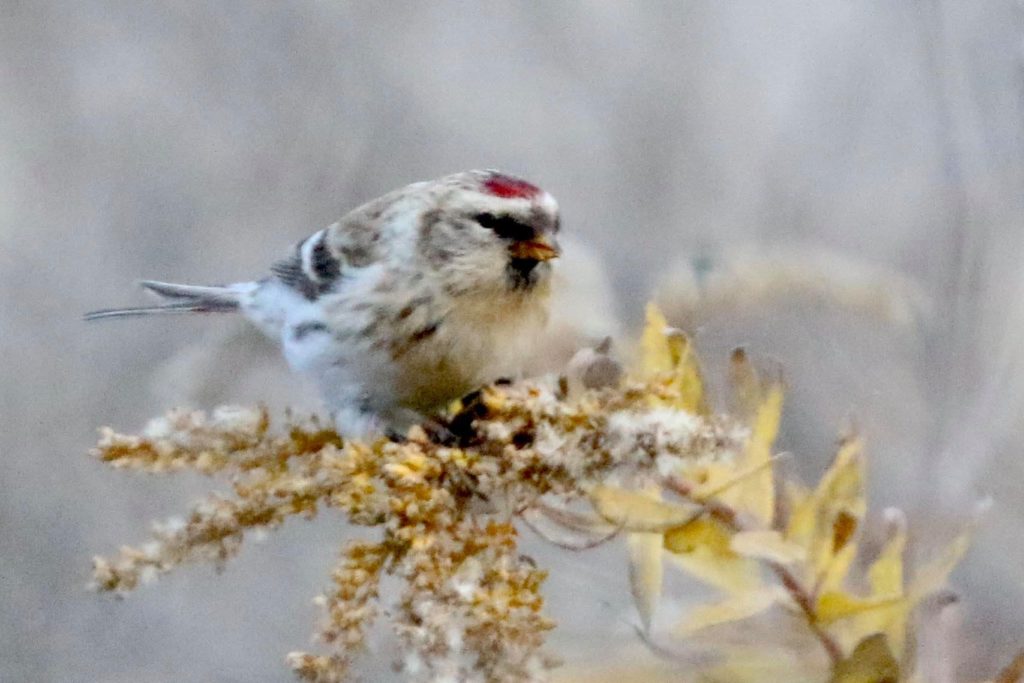
On November 7th, I along with Sarah, Adam, and Sarah’s father, Roger, were birding Lake Erie Bluffs getting photographs of the Common Redpolls when Sarah received a message from Joan Scharf that Matthew Montonini had found a Northern Saw-whet Owl in the small pine grove of Chagrin River Park. Sarah and I fled in that direction immediately with Adam and Roger saying they would catch up. Upon arrival it was just us looking. Then the Avrams, Adam and Roger, and others arrived until there were at least ten of us looking in this pine stand and we couldn’t find the bird. Andy advised he was getting some intel and was messaging the finder, Matt. Even with his direction no one could find this bird. Matt had to come out and relocate it for us and it was right there still in the exact spot where Matt had found it. The last tough-to-get owl, except for the Snowy Owl, had now been located. No more owl chasing in the usual manner. We will no doubt find a Snowy Owl along the 535 or on the far breakwall at Fairport Harbor but as of December 1st it has yet to happen.
Sarah
Later that same weekend Erin and Andy found a Hoary Redpoll at Painesville Township Park. On the way there, Jim got a flat tyre. My dad and I stopped to see what happened and Jim said, “Don’t worry about me, just go get the bird!” Andy and Erin pulled over on their way from the park to see what was going on and to tell us where to look. When we arrived at the park, I saw a small flock of redpolls and one looked lighter, but they all flew into the thick vegetation and then perhaps west past the fence into a restricted area. That was an unfortunate miss.
The morning of November 10th was sunny with little wind. It was a terrible day for ducks, but great for finches. Jim, Erin, and I were watching for flocks of small birds to come in from the lake at Painesville Township Park. Erin’s daughter was doing school via Zoom in the backseat of the car as had become their custom. We enjoyed flyovers of Pine Siskin, American Goldfinch, Evening Grosbeaks, Common Redpolls, and Snow Buntings. Erin had to leave because her phone battery was going to die from hot-spotting the device used for school and they had to get home before the next session began. About 10 minutes after Erin left, Jim and I decided it was getting boring and were going to head to Wake Robin. We had our scopes on our shoulders and were walking back to our cars when another flock of birds flew in. I could hear them calling and it wasn’t anything I’d heard that morning or ever – rapid staccato chifs. Scopes got dumped in the grass and the apple core I was about to throw away got tossed. The small group flew around a nearby tree like they might land, and I could see white on the wings of at least two birds. “Look at the white on the wings!” Jim exclaimed. After we saw the White-winged Crossbills, Erin was reluctant to leave unless we were leaving, and every morning became one of those Survivor-like outlast situations.
I saw White-winged Crossbills once more when I arrived one morning at Painesville Township Park to see Dave Chase’s car still running with the door open. He was down the hill looking intently and gesturing. I grabbed my binoculars and ran down there to see he had a flock of about a dozen birds feeding in the prairie plants on the hillside. I got a great look at a female White-winged Crossbill at the top of a stalk. I ran to get my camera, but a Cooper’s Hawk spooked the flock before I returned.
Jim
On November 13th I was birding the Bluffs when a message went out saying Joan Scharf had posted a pic of a possible Spotted Towhee at Chagrin River Park to Birding Ohio and the chase was on. I was the first to arrive at the park but overshot the bird’s location. The next to arrive were Caitlin, Sarah, and Andy Avram. While walking up the trail behind the shelter, Andy found the bird first and it quickly disappeared. Within a few minutes, birders from all over were showing up on OUR patch even before we got the bird. It took some time, but all the top birders finally got to see the Spotted Towhee and I added another Life Bird for the year. Pics, on the other hand were almost impossible, as it stayed hidden 98% of the time.
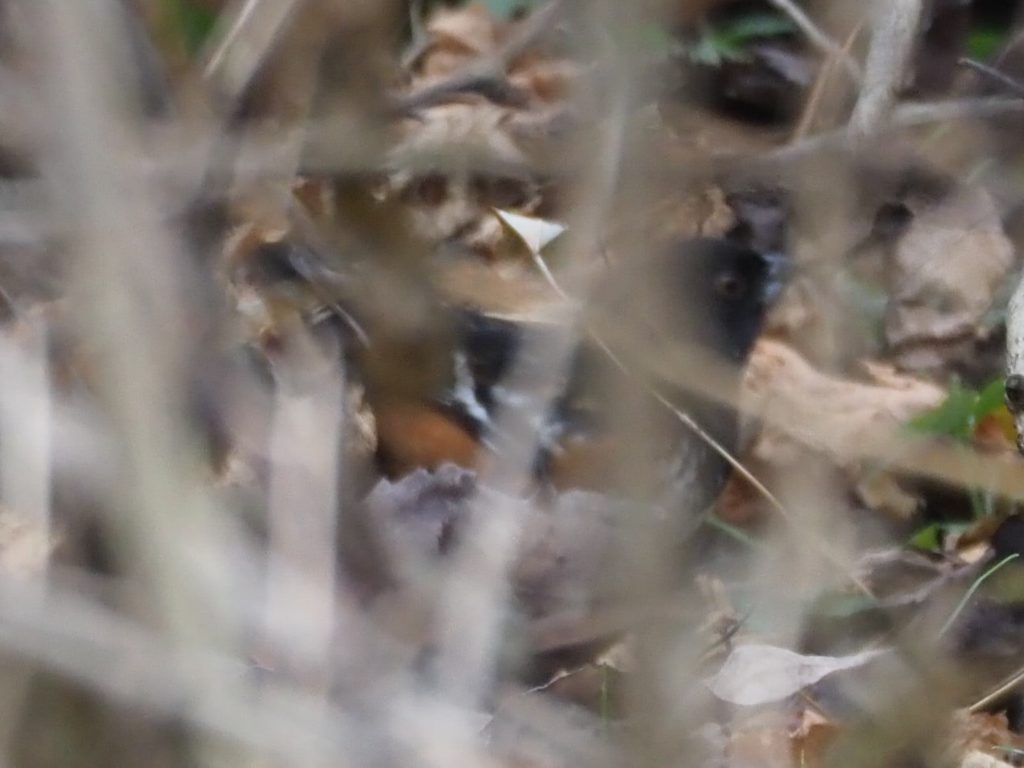
Sarah
November 15th was another bad weather Sunday with Jim working. I was watching the lake at Painesville Township Park with the Avrams and Dave. We were standing along the fence pretending it wasn’t raining and that we weren’t freezing. Erin was tenaciously scoping the hundreds of Bonaparte’s Gulls whizzing by. Andy was scanning them with binoculars when he got excited about something – “something dark,” he said. My adrenaline spiked as I panicked that I wouldn’t see whatever it was, and I didn’t know what I was looking for. “Is it the same size as a Bonaparte’s?” I asked, as I saw a small dark gull. “It’s a Sabine’s,” was Andy’s reply. I knew he wanted it to be a kittiwake instead. I was overjoyed although the binocular view through the rain was poor. I contemplated trying to find it in my scope but knew it would be near impossible to wipe the raindrops off my scope and then find the gull again before it was gone.
As the gull departed, Erin hit her husband on the arm and declared, “You weren’t supposed to find Sarah a Sabine’s, you’re supposed to help me find a Little Gull!” Then she went back to her serious scoping. My glee was short-lived because not ten minutes later Erin got her Little Gull. The familiar fear returned, and I couldn’t find the bird and it was gone. Relief washed over me, not long after, as we all received a message that Kari had found, most likely the same Little Gull, at the Fairport Harbor Pier flying at the mouth of the Grand River. Many birders enjoyed spectacular views of that gull, even Jim, who was working, got it first thing the next morning in the same location.
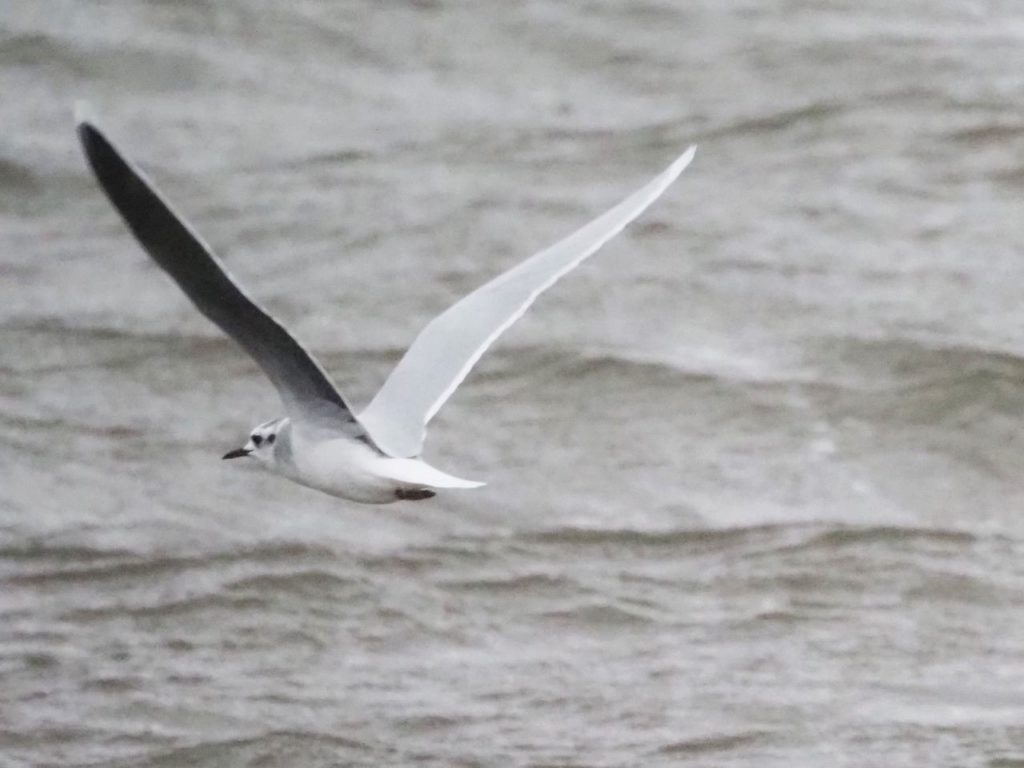
The last half of November was still ahead, and state bird chasing was soon to become a priority.
Part 16 – November continued
Jim
Well, the second half of November started out with a bang as Galloway, Ohio reported a first state record of a Black-chinned Hummingbird. Sarah and I started to chase this bird with a secondary plan to try and locate a Rufous Hummingbird in the Bobolink Area on our way home. The Black-chinned Hummingbird was visiting a feeder in a private yard on the west side of Columbus, a good two-and-a-half-hour drive.
Sarah and I arrived at the stakeout location and met with friends and other big year chasers all looking for a view of Ohio’s first record of a Black-chinned Hummingbird. Fifteen minutes after arrival the guest hummingbird arrived to ooohs and aaahs. Sarah and I were able to get a few pics and get great views through our spotting scopes. This first Ohio record of a Black-chinned Hummingbird, was also my 300th Ohio bird for 2020. Talk about a real anomaly. Not too many members of the Ohio 300 club can say that about their big year.
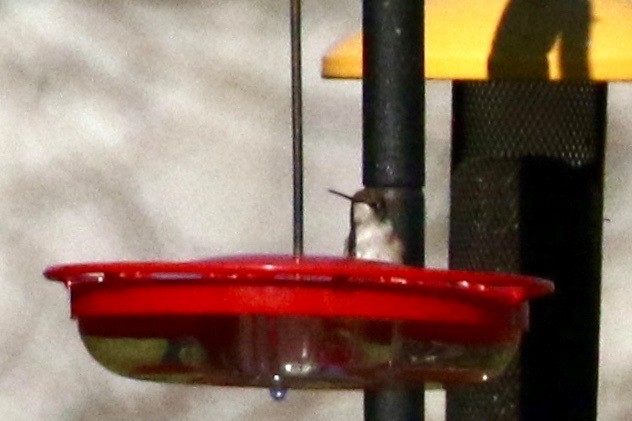
While there, we chatted with Leslie Sours who gave us directions on finding a Ring-necked Pheasant at Battelle Darby Metropark, our next stop before pursuing the Rufous Hummingbird. The pheasant didn’t pan out, more from birder error on my part, than anything else. We stayed too long looking for the pheasant and arrived too late at the Rufous Hummingbird stakeout location to get a glimpse of the bird. Still, all in all, I’m giddy over that 300th bird.
November 24th, I made my third attempt to see the Rufous Hummingbird. I was chasing alone that day, as Sarah was in class teaching. I arrived at Sarah and Albert Troyer’s residence in the early afternoon and chatted with Albert Troyer who told me that the hummingbird was still coming to their feeder about every 25 minutes. Sure enough, 20 minutes later the bird arrived and I took a few pics before heading home. Sarah was also able to get the hummingbird when she and Adam stopped on their way to Cincinnati for Thanksgiving.
Then came Thanksgiving Day, November 26th, when others were sitting down with their families enjoying all the fixings of a big turkey dinner, I was chasing Western and Black-necked (Eared) Grebes and eating tuna fish and crackers on the hood of my pick-up truck. That’s not a complaint, just saying that Thanksgiving Day is enjoyed in so many ways.
I drove first to Evans Lake and ran into my old friend Donna Kuhn and Deb Sweeny. We walked out to the edge of the lake and Donna immediately locked onto the bird in her scope. She shared her view and bingo; I have a lifer Western Grebe. I then located it with my scope and got some decent but long-range photos. After an hour there and spending time chatting with neighbors, at a social distance of course, I was off chasing the Black-necked (Eared) Grebe.
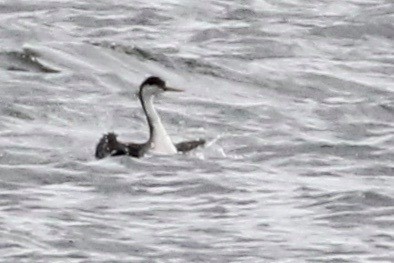
My next destination was LaDue Reservoir in Geauga County with hopes of finding that Black-necked (Eared) Grebe reported behind the boathouse. Birders were giving me tips about walking north along the lake as the bird had been seen there several times, since it could not be located elsewhere. It wasn’t long before I got a view of the bird. I have seen numerous Black-necked (Eared) Grebes these past few years and this was the least satisfying. It also gave me the slip before I could refind it and grab a pic. I walked out of the park with ten pounds of mud on my boots, but I drove home thankful for all the birds I’ve had the privilege of seeing this crazy year.
November 27th, I was heading out of town on another bird adventure but was first meeting up with Jamie at Wake Robin Trail to just simply bird together. Just prior to Jamie arriving, Jerry Talkington texted me about a sighting of a Western Tanager being seen at Lakewood Park Cemetery in Lakewood on the west side of Cleveland. Jamie arrived, and he too wanted to chase this bird, so off we went. We arrived in Lakewood Park Cemetery forty minutes later and bingo, there it is, and we got great pics of it as well. If it weren’t for Jerry giving me a heads-up, I would have missed that lifer. Thanks Jerry!
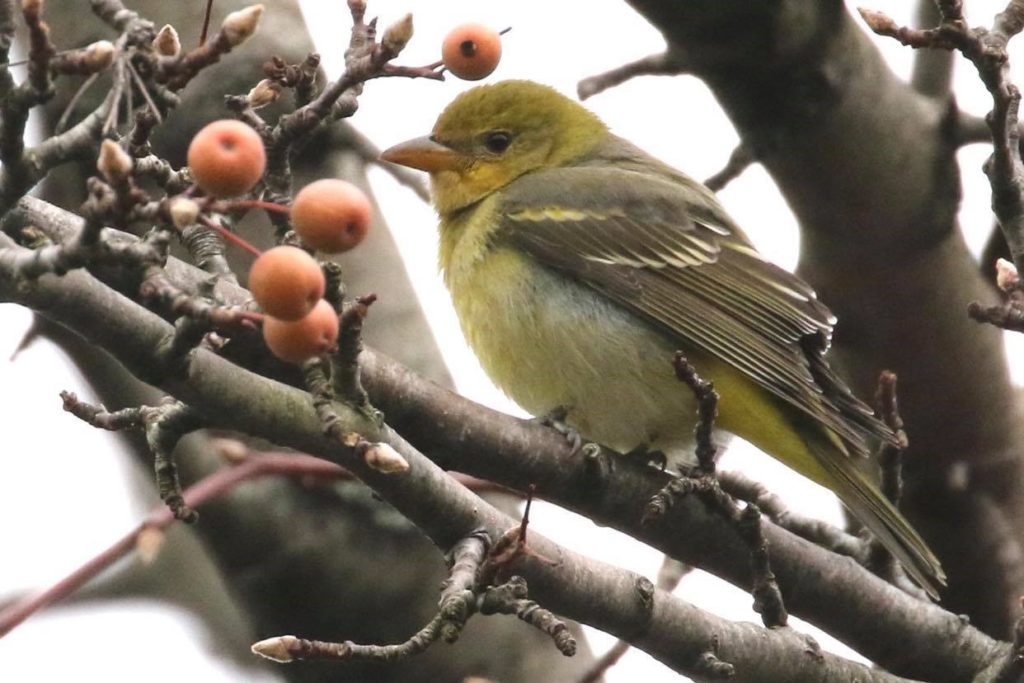
Sarah
Not much happened in the second half of November for me. Adam and I successfully chased a Ross’s Goose in Clyde, Ohio. Several great birds showed up in northeastern Ohio while we were in southwestern Ohio for Thanksgiving, but at the time of writing this, some of them are still around, so I’m still hoping to get to 300.
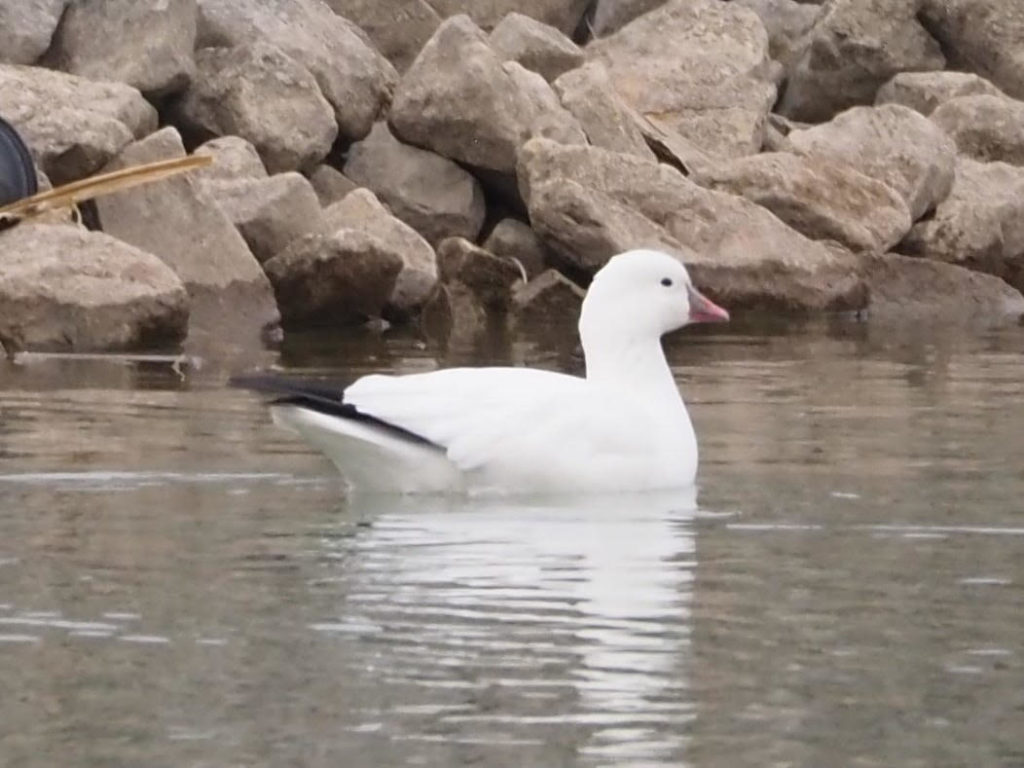
On Thanksgiving Day, Dave Chase messaged the group that he had some Canvasbacks in the Fairport Harbor. I needed those Canvasbacks, especially since the Avram’s already had them early in the year. It was starting to feel like 4th of July all over again. Out of concern for the ducks, Kari asked if there were hunters nearby. Dave’s reply was, “Damn! Don’t come. They’re decoys.” My family and I had a good laugh over that.
End of November totals
Sarah: 258 (Lake County), 296 (Ohio)
Jim: 255 (Lake County), 304 (Ohio)
Part 17 – December
Sarah
Due to COVID, my husband, Adam had hardly used any of his vacation time, including a week he bought with a week’s salary. He had to use or lose it at the end of the year. After Thanksgiving my college was going completely virtual and only had two weeks left anyway. It was the perfect opportunity to take an epic road trip, so we left Ohio for the first time that year…and took Jim with us!
There were too many birds and adventures to go into detail here. I hope to be able to tell these stories over beers someday and plan to post pictures to my Instagram, @wander_lister. I ended up with 30 lifers, mostly in Arizona and Texas, but a few were found at strategic stops in Kansas and I saw my lifer Golden Eagle on a telephone pole alongside a gravel road in the southeast corner of Colorado.
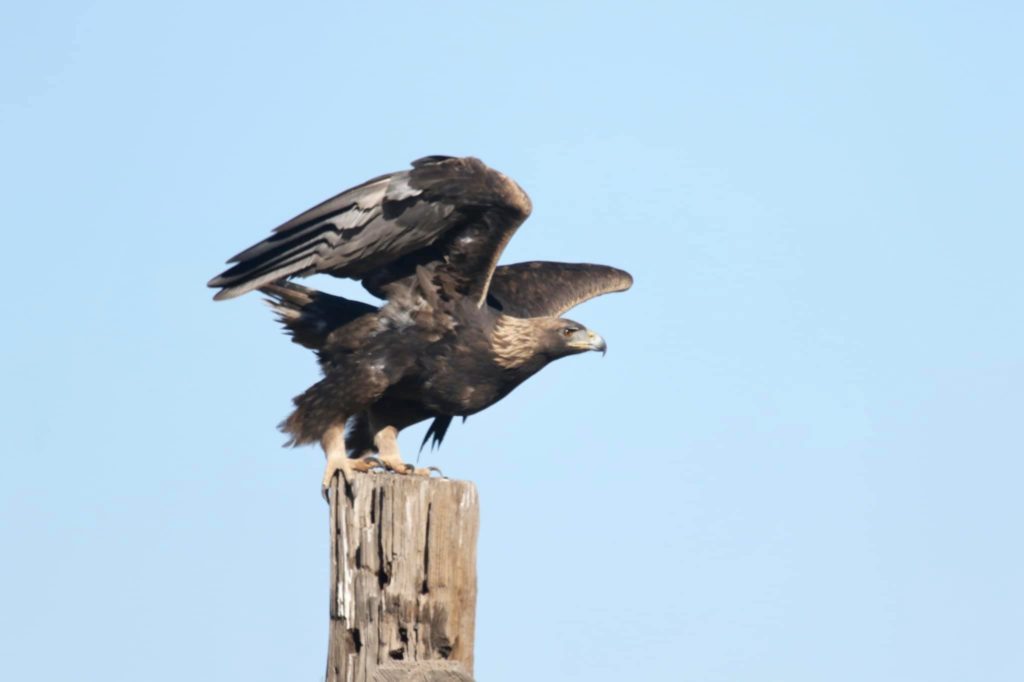
The pinnacle of the trip occurred the day we were to begin driving back to Ohio. We were staying with our friends, Dave and Karen in Houston. The day before we’d spent all day birding with them at Anahuac NWR and all the while I was keeping tabs on reports of an ABA code 5 rarity everyone was excited about. That night we enjoyed beers and playing Wingspan. It was almost midnight when we were talking in the kitchen and I said, “I think we need to get this bird. We’ll regret it if we don’t.” It was four hours in the wrong direction. Dave said, “If I was that into birding, I would go. You guys can stay here again tomorrow night.”
A plan was hatched and we left at 6am, headed for Choke Canyon State Park. I was so amped and anxious I thought I might throw up. After an hour of driving, the reports started appearing, “It’s still there!” I announced with a sigh of relief. We arrived and joined the other birders already spaced out on the grassy hillside all looking in the same direction. At first, I saw nothing because I was looking too far. “It’s right there,” Jim said and pointed. Only about 20 feet in front of us, I saw movement in a small clump of grass. The bird flirted with us, poking its head up a few times until finally, it was all the way out – the Spotted Rail! My last lifer of the year.
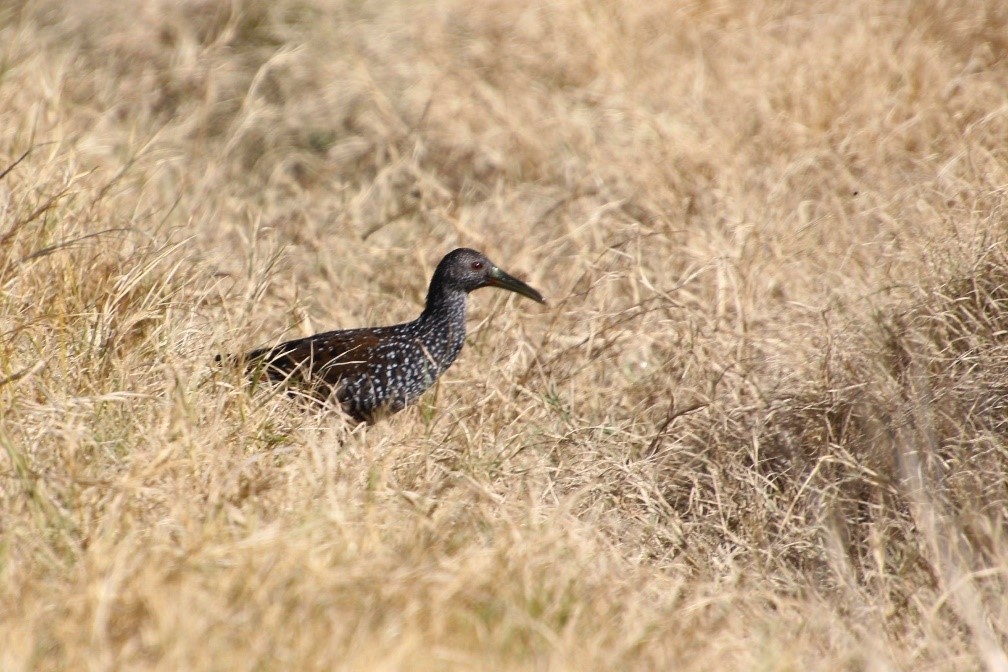
Jim
I didn’t commit to this grand birding trip until the last second and it turned out to be epic. I met Sarah and Adam in Cincinnati the evening of November 27th and off we went on the 28th. Our trip took us birding through Kansas, Colorado, driving straight through New Mexico because of their Covid19 requirements, Arizona, and finishing up in southern and coastal Texas. Twenty-six days of pure birding madness.
Like Sarah said, the Spotted Rail being seen in the ABA area was quite an anomaly, and is the rarest tick I have had north of Mexico. This bird was the first real visitor of the species anyone could really add to their North American list. Such a prized bird that someone flew in from Hawaii to see it. Other great rarities seen during the trip were the Northern Jacana, Morelet’s Seedeater, Northern Beardless-Tryannulet, Chihuahuan Raven (at the Brownsville Dump), Blue Bunting and the Crimson-collared Grosbeak. It was an amazing 26 days. My favorite area to bird was Texas, along the Rio Grande. I will be going back there this coming fall and taking my camper with me. We mostly took food with us and ate from the car and, on the rare occasion, ventured out to find a place to eat, we did so with almost no one else around. If you ask me, the safest thing anyone could have done during this pandemic was to be outside and birding. Travel was a risk that we tactically overcame with just a little planning.
A few other issues arose for me. I broke my Canon 100-400mm lens before the Northern Jacana and replaced it with an older model in Tucson. That lens lasted until just before the Spotted Rail at Choke Canyon because I dropped it when the neck strap detached accidently. Sarah’s good friends, Dave and Karen, loaned me a lens to chase the rail. That wasn’t all as my Zeiss Victory SF 8×42’s hinge failed. I was able to continue using them due to an ample amount of duct tape. Since returning home on December 23rd the binoculars are in for a free repair or replacement, my top line Canon 100-400mm lens was fixed at a local camera shop for $125. Just remember it’s all about the birds, but rule #1 is always carry duct tape. The most valuable piece of gear you carry is your binoculars as they will make or break a trip. Maybe even pack a backup pair.
Sarah
Adam and I spent Christmas visiting family in southern Ohio, so when we returned to northeastern Ohio I had five days to finish the year. While we were away, the Avrams added King Eider, Red-necked Grebe and Snowy Owl to their county lists to put Erin in first, two birds ahead of me. Dave Chase added the grebe, owl, and Canvasback, which the Avrams had early in the year, to put him one bird ahead of me.
That Sunday morning, I birded Fairport Harbor looking for Canvasbacks and the Snowy Owl without success. It was clear to me that it was unlikely I would regain my Lake County lead or even tie Erin since I’d have to find birds that were probably long gone because if I found anything new, they’d get it too. I decided to prioritize getting the few birds I needed to reach 300 in Ohio for the year. Just as I was about to go home for lunch, I saw a report that Jen Brumfield had found a Black-headed Gull at Whiskey Island Marina in Cuyahoga County. I messaged Jim and the chase was on.
Jim
On December 27th Sarah messaged me that she was going for the Black-headed Gull at Whiskey Island Marina in Cleveland, so I met her there to chase it as well, as chasers enjoy company. We were there about two hours as Jen Brumfield and Tim Jasinski chummed with cat food to try to bring the gull back in for another viewing. I was freezing and said I was walking back to the car for my gloves and as I turned to leave, I heard, “There it is! Black-headed Gull!” I realized I should have threatened to leave an hour earlier, and I would have had that bird by now and remained a lot warmer. I was able to get a couple of pics with a 280mm lens I dug up at home for the occasion. The Black-headed Gull would be my last life bird for 2020 and the final and 305th Ohio bird of my year.
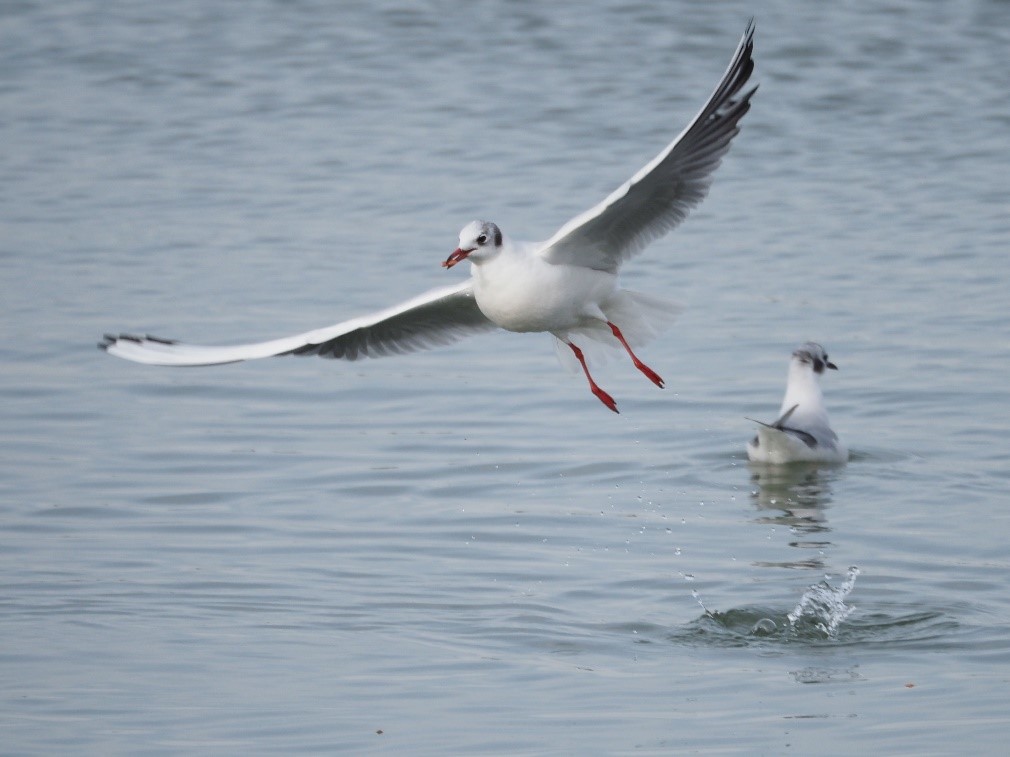
Sarah
After getting the Black-headed Gull, I decide to head west to Oberlin Reservoir in Lorain County to look for the Long-tailed Ducks that had been there for a couple weeks. I walked around the entire lake seeing a lot of ducks, but not the ones I needed. Before heading home, I checked my Ohio needs list for anything reported nearby and saw a Long-tailed Duck had been seen that day at Edgewater Park a few minutes from the Black-headed Gull where I had been! Irritated, I checked on the way home, but found nothing and it was getting late.
With four days left, I was at 297 for Ohio for the year with plenty of possible birds to chase, including Snow Goose, Long-tailed Duck, Say’s Phoebe, Red Crossbill, Ring-necked Pheasant, and Varied Thrush. I asked my Facebook friends for advice on these and my friend, Paul Jacyk said he’d just seen Snow Geese in his county that day, but it was over two and a half hours away.
On Monday morning, I half-heartedly birded Lake County for an hour or so until I saw that Paul’s Snow Geese had just been seen. I was on my way to Toledo! I checked the golf course where they were seen that morning, but there were only Canada Geese. I checked a second golf course but didn’t see any geese. I was driving down the road looking for a place to turn around and check again when I saw a bunch of geese in the water in the bay. There they were! I didn’t even turn my car off, just snapped a few photos, completed an eBird list, and set off for my second target of the day, Red Crossbills that were being seen at Oak Openings not far away. I spent the rest of the day searching all the places they had been reported, but without success. I later found out someone had seen many in the area that day, but purposely held back the eBird report until Wednesday.
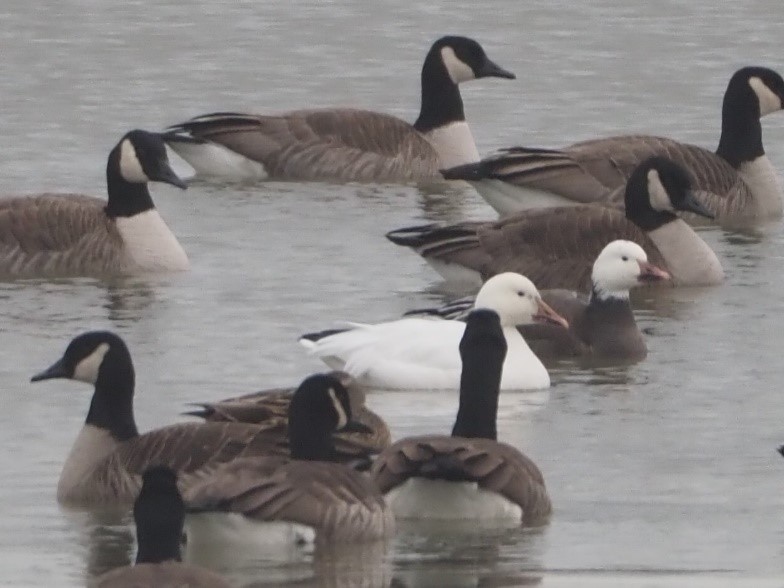
On Tuesday, I had two targets in mind, Long-tailed Duck and Varied Thrush, and headed south. I first checked Lake Cable where a Long-tailed Duck had been for a while as recently as a few days ago. To my dismay the lake was almost completely frozen, and the only ducks were mallards. I messaged Kent Miller to ask about the thrush, thinking I’d head home if they hadn’t been seen for a while, but he encouraged me, especially since there were two in close proximity.
I arrived at the first house (or so I thought) and looked around but didn’t see many birds coming to the feeder. I checked the eBird reports and realized I was at the neighbor’s house (they shared a driveway). The feeder I should have been watching wasn’t visible from the driveway, only the road and it was still cold out, so I drove by a couple times and decided to head to the other house that was hosting a different Varied Thrush. I got to the other house and looked around but didn’t see many birds. I said a little prayer, “Please let this bird show or let me get word about something else close by.” Miraculously, minutes later I got a message from my friend, Kevin Perozeni, “Just got the phoebe.” He had to mean the Say’s Phoebe that hadn’t been reported since Christmas Eve. I mapped it and saw it was much closer than I’d thought. I replied, “I’m 20 min away!”
Kevin waited for me and showed me exactly where to look. Word had gotten out fast and four birders showed up to join the search. Kevin left me with them to get some lunch and head home. The phoebe appeared after about an hour’s absence. I took several pictures and then immediately headed back to the first Varied Thrush stakeout.
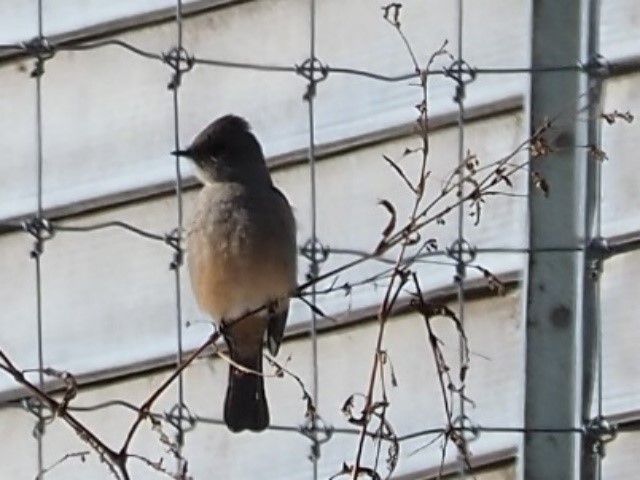
I’d gotten advice from one of the Amish birders that came to see the phoebe that the first thrush was more reliable and to watch under the suet feeder at the woods edge. I stood at the side of the road like a weirdo for nearly two hours hoping the thrush would appear. Meanwhile the Long-tailed Duck reappeared in Cleveland and I was missing birds in Lake County. I should have left right after Deb messaged me about the duck, but I stuck it out too long and went looking for the duck at the end of the day but didn’t find it. That evening I found out Kevin wrecked his car after leaving the Say’s Phoebe stakeout. Thankfully he was unharmed.
Jim
On December 30th I was able to catch a glimpse of a Snowy Owl off State Rt 535 in Lake County thanks to the Birding Guru, Jerry Talkington. While I was watching the Snowy Owl, Andy and Erin Avram found an Eared Grebe along the break wall at Fairport Harbor Lakefront Park. I headed there next and got great views of the bird through my scope. So at the end of the day on December 30th I added these two birds to my Lake County list for 2020 and ended in 5th place with 257 species. Sarah and Andy ended with 258 birds and tied for 3rd place with Dave Chase in second with 260 species. The Grand Winner, as we were all winners, was Erin Avram with 261 species for Lake County and a new county record for most birds seen in a single year. Congratulations Erin! There was still December 31st yet to bird, so I chased after the Say’s Phoebe and stayed on that location for over five hours before calling it a year.
Sarah
On Wednesday, my friend, Tim Jasinski helped me look for the Long-tailed Duck that seemingly everyone saw the day before. The winds were 24 mph from the south. He theorized that the duck may be hiding on the far side of the breakwall on the lee side of the wind. I thought he was right and checked one last place and called it a day since it rained all afternoon.
Thursday was New Year’s Eve and I still needed one more species. My choices involved going back to one of the places where I dipped earlier in the week or try for the unreliable Ring-necked Pheasants in Columbus. Everyone advised me to try again for the Red Crossbills with the duck as a backup.
I left my house at 5am to be there at dawn and have as much time as possible to search. My friend, Chad Pumpelly from Columbus met me at the Oak Openings Lodge. We enjoyed catching up, but the birds were a no-show and he left after a few hours. I was stressed and couldn’t keep staring hopelessly into the pine trees at the parking lot, so I took a hike. All the sightings were along Swan Creek, so I walked a trail that paralleled it until I was at Obee Road where the large flock was seen before.
I ran into Paul Jacyk who was looking for White-winged Crossbills. He said the lodge was my best bet, so I hiked back to my car, went to get some Wendy’s, and ate my lunch in the parking lot of the lodge. I was back to staring up at the pines again and Paul stopped by on his way to walk down Tornado Alley, a nearby trail. Shortly after Paul walked away, I got an email alert and opened Outlook to read an Ohio needs alert from eBird of a Long-tailed Duck on Lake Erie at Metzger Marsh. That was only an hour away, towards home! I messaged Paul, “I’m out of here, there’s a Long-tailed Duck at Metzger Marsh.”
Fields flew by as I rushed there praying the duck would still be there. When I arrived, I didn’t see any birders, so I reread the eBird report comments, “On south side of pier at Metzger Woodlot.” I grabbed my binoculars and ran for the pier and there she was! Ohio 2020 #300 – Long-tailed Duck!
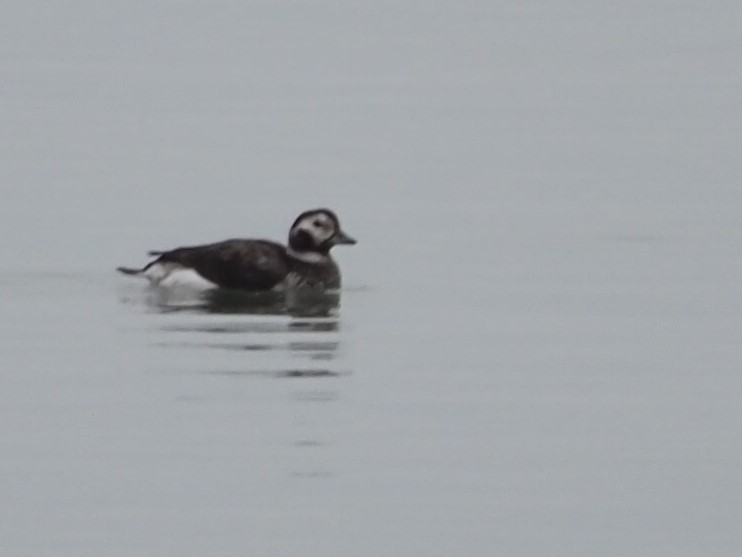
Jim
In conclusion, pandemic or not, I would not have missed this birding year for anything. It was full of great challenges, great competition, and even greater friendships. I think everyone learned a lot, especially about ourselves and how to really bird our patch. There is no better crew to bird with than the folks mentioned in the pages of this blog. A special thank you to Sarah who invited me to share this blog and for those long beach walks (death marches) in deep sands from hell, looking for Whimbrels and such things in some of the north coast’s most miserable weather. It was and is an unforgettable year.
Sarah
Many people are glad to see 2020 behind them, but I’m a little sad. Everything about the situation was unique. I may never bird so intensely every day for as many days in a row again. Knowing Jim would be out there got me out of bed all those early mornings. A year ago, Jim and I barely knew each other, but you would never know that now and I consider him one of my best friends. I will probably forget the exact numbers and maybe even the birds, but I won’t forget the friends and the fun we all had.
